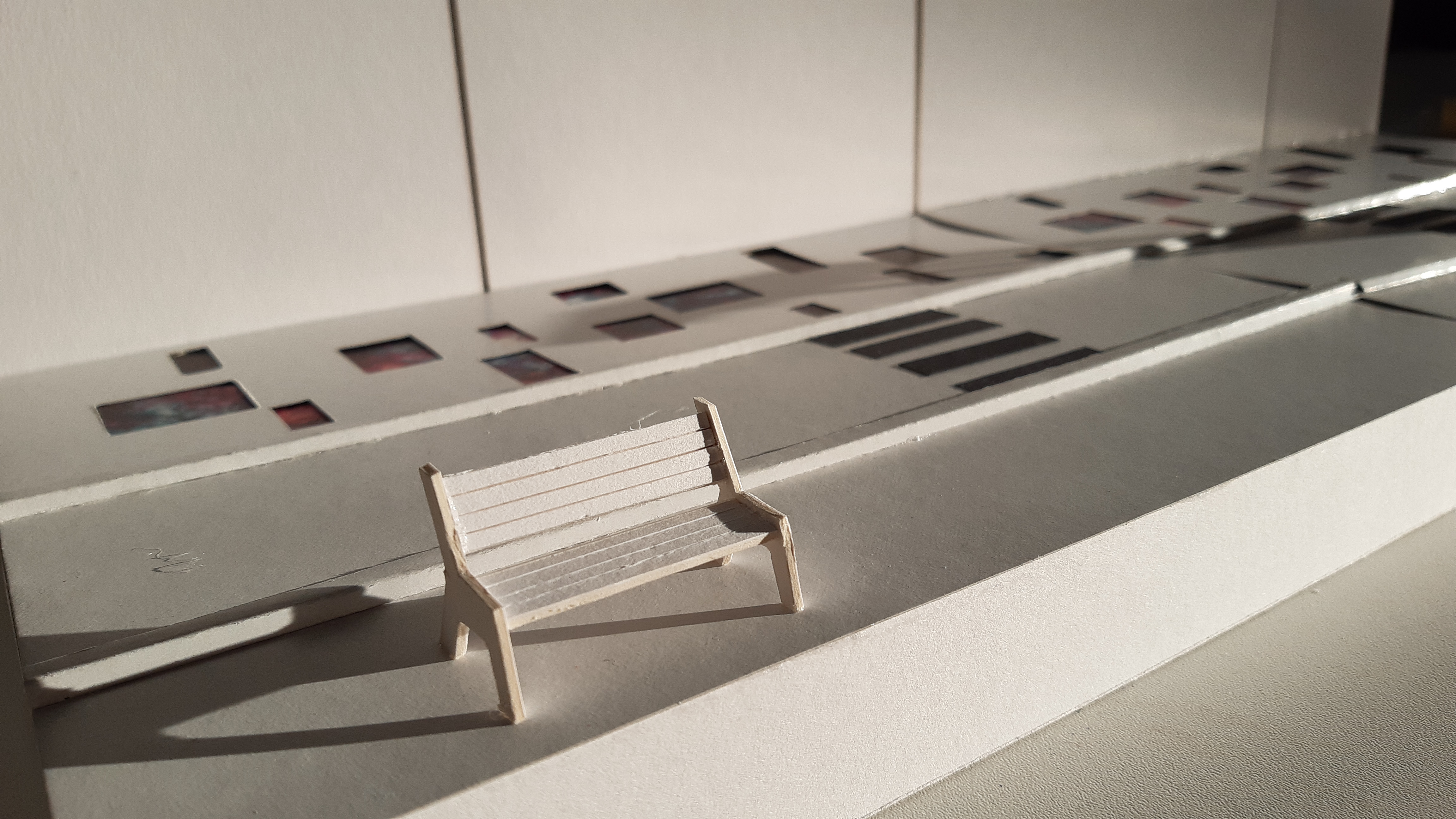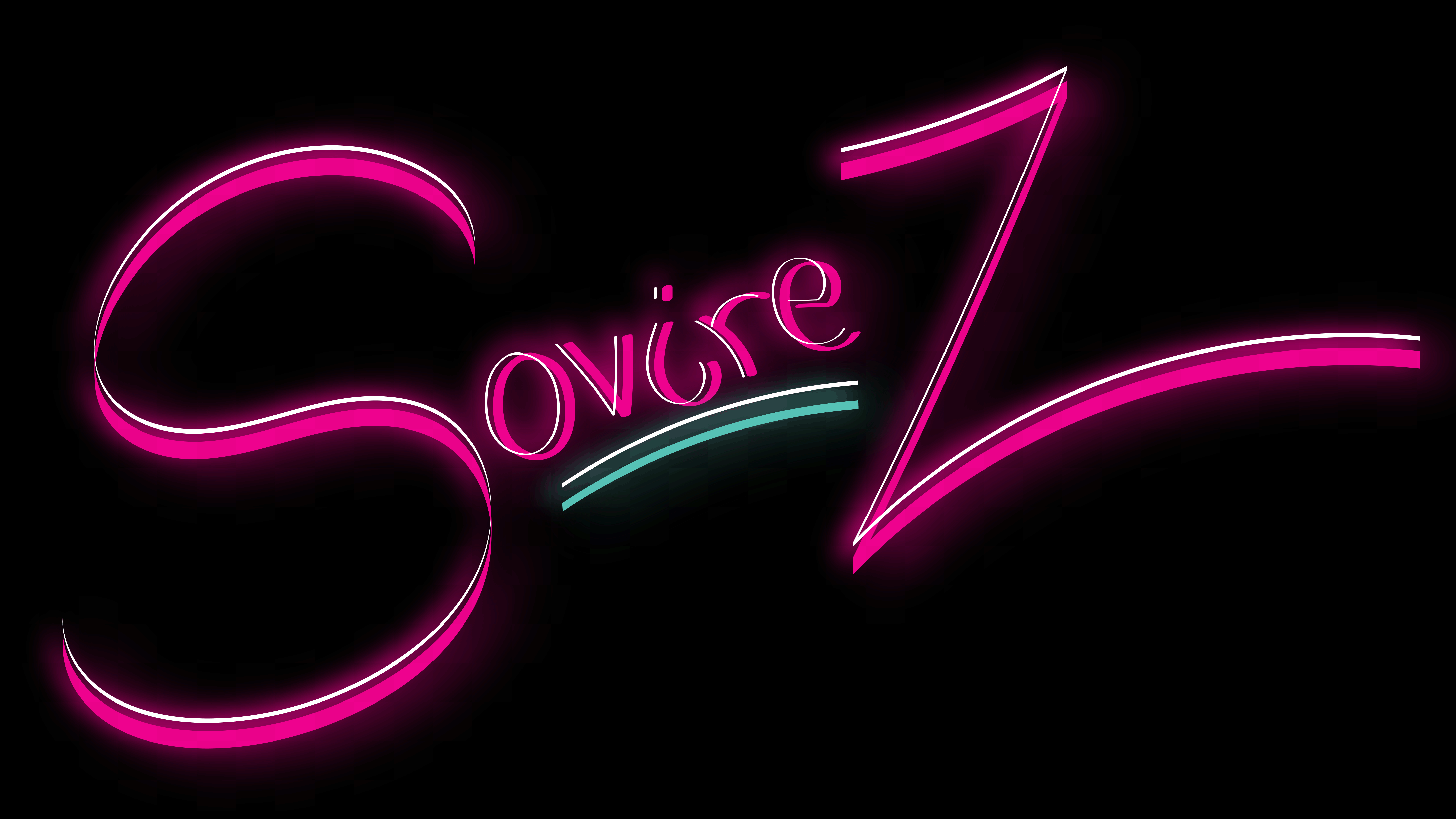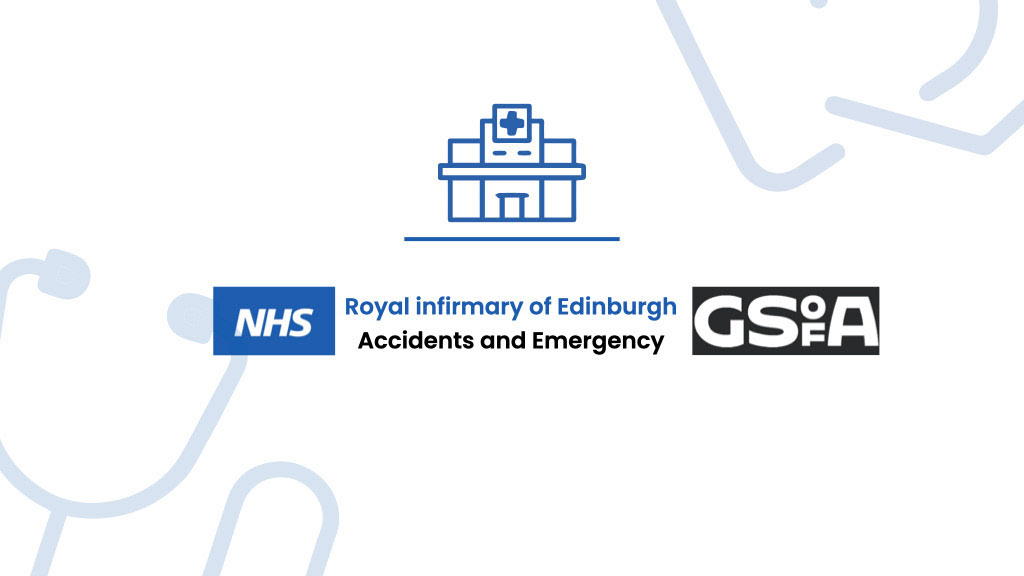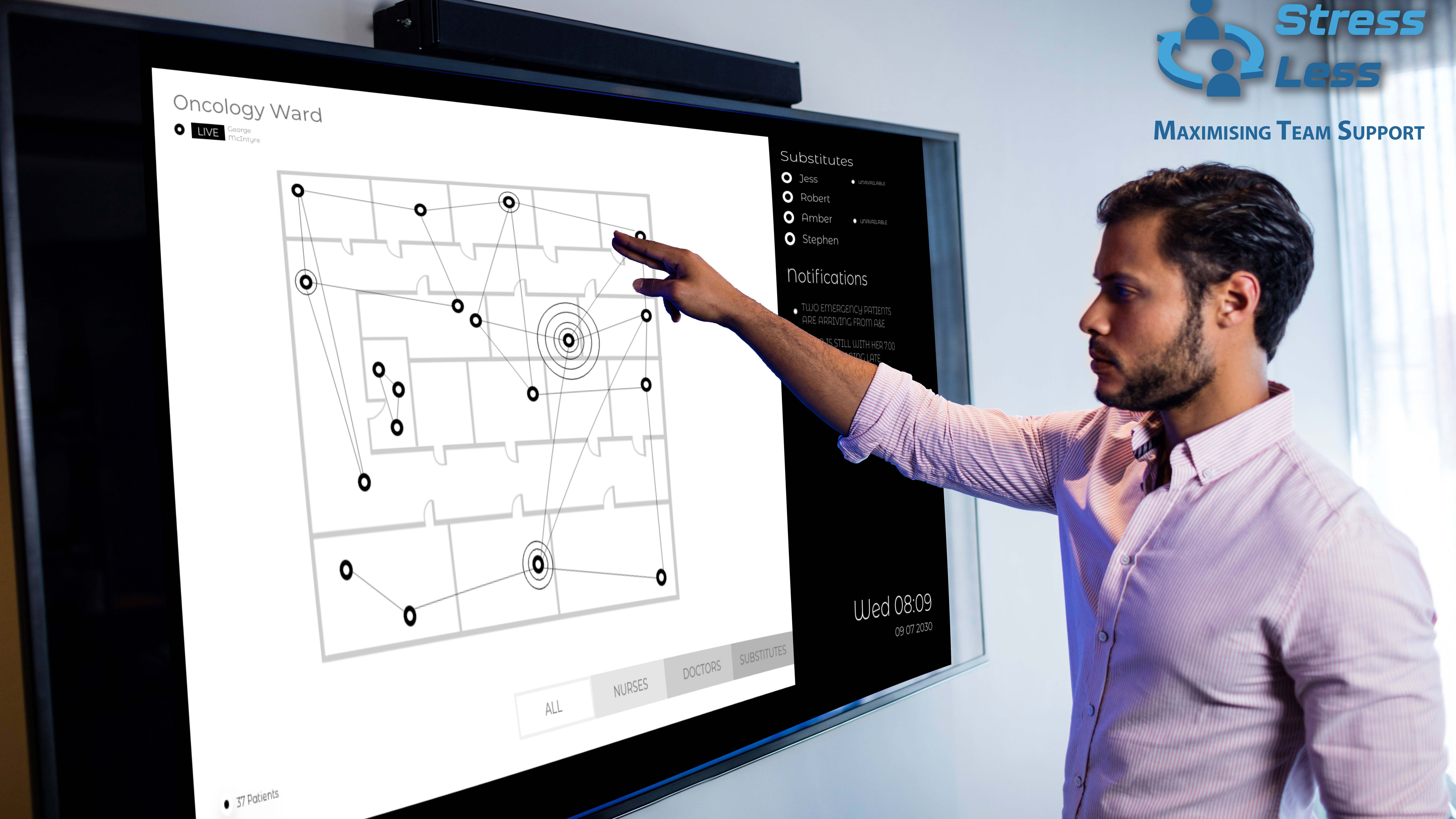Family Engagement Through and Post Covid-19

Design Brief: In light of the pandemic many families have experienced a quarantine lockdown together. Within this, interactions between members have changed, new values have been created and for many they have gotten to know each other better. Parental roles may have changed as well as their availability whilst their work adapted to working from home or prioritising key workers. Having lived through this and adapted the family dynamic to suit this new lifestyle it brings into question what this experience will mean for families post pandemic. Children learning and adults working from home changed the requirements for the family home, the private comfort of home became a public classroom and office space. My project will examine family struggles by engaging with users and through the creation and roleplaying of personas. As my project will take place during the pandemic my communication with my target audience and user participation will predominantly take place online utilising platforms such as Mural, Padlet, Miro and Zoom. I intend to co-design with my target audience in order to produce a more insightful project and valuable outcome.
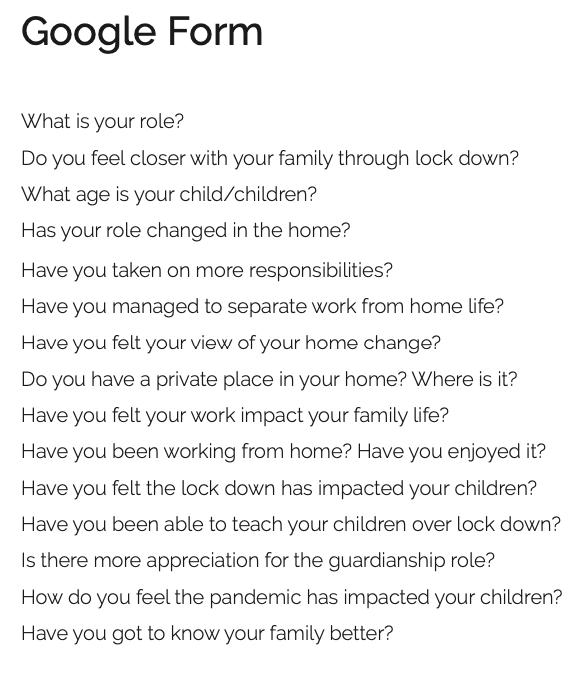
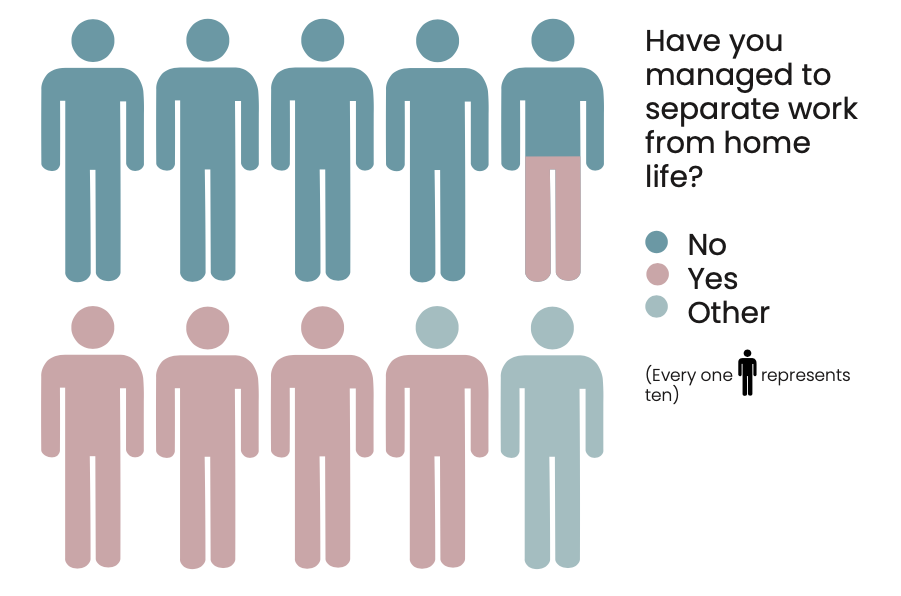

In my initial week of my project I decided to create a google form to make initial contact with families. This established a relationship with them for potential further participant input later in my project. This also provided me with a set of qualitative data from a spread of perspectives.
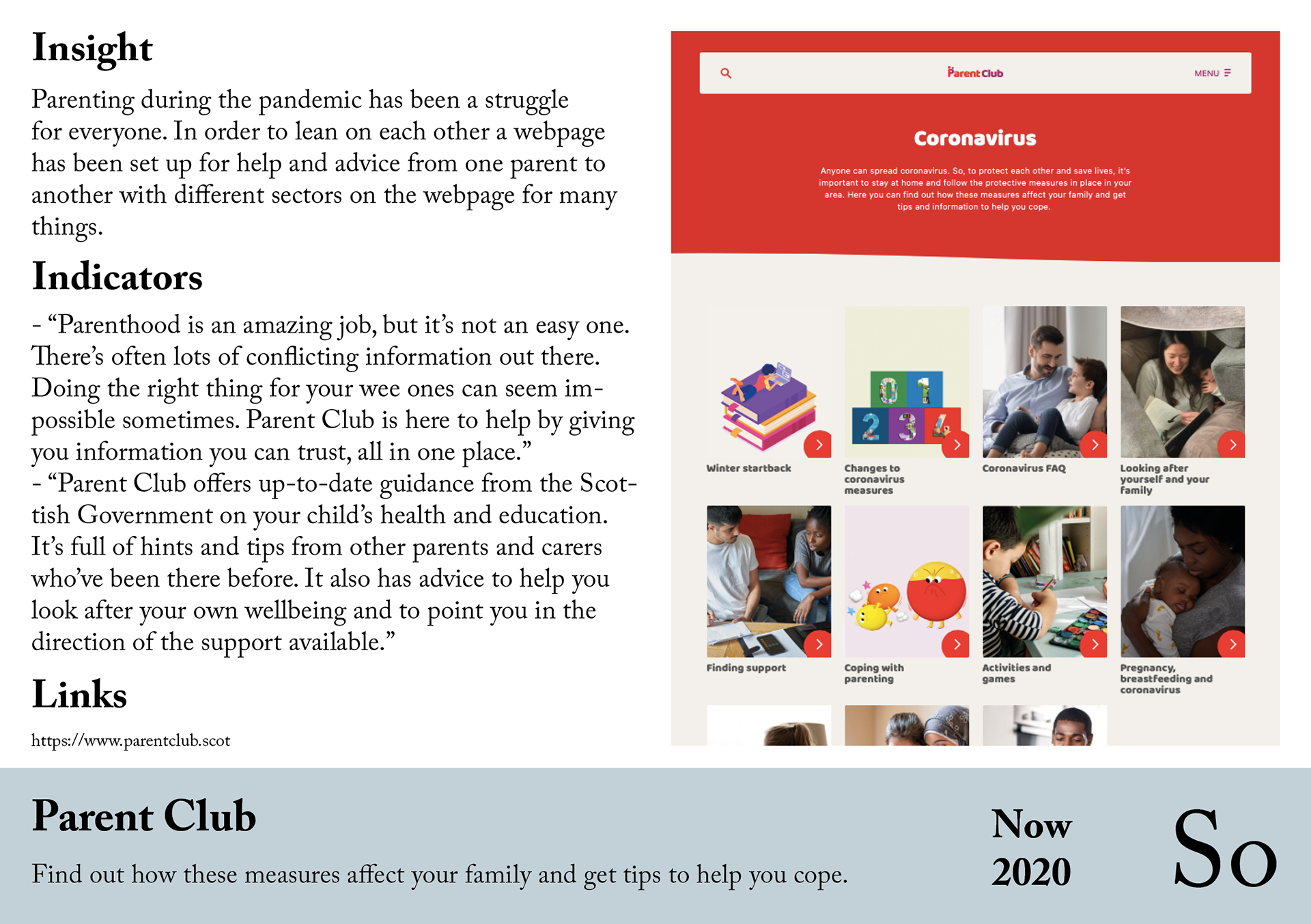
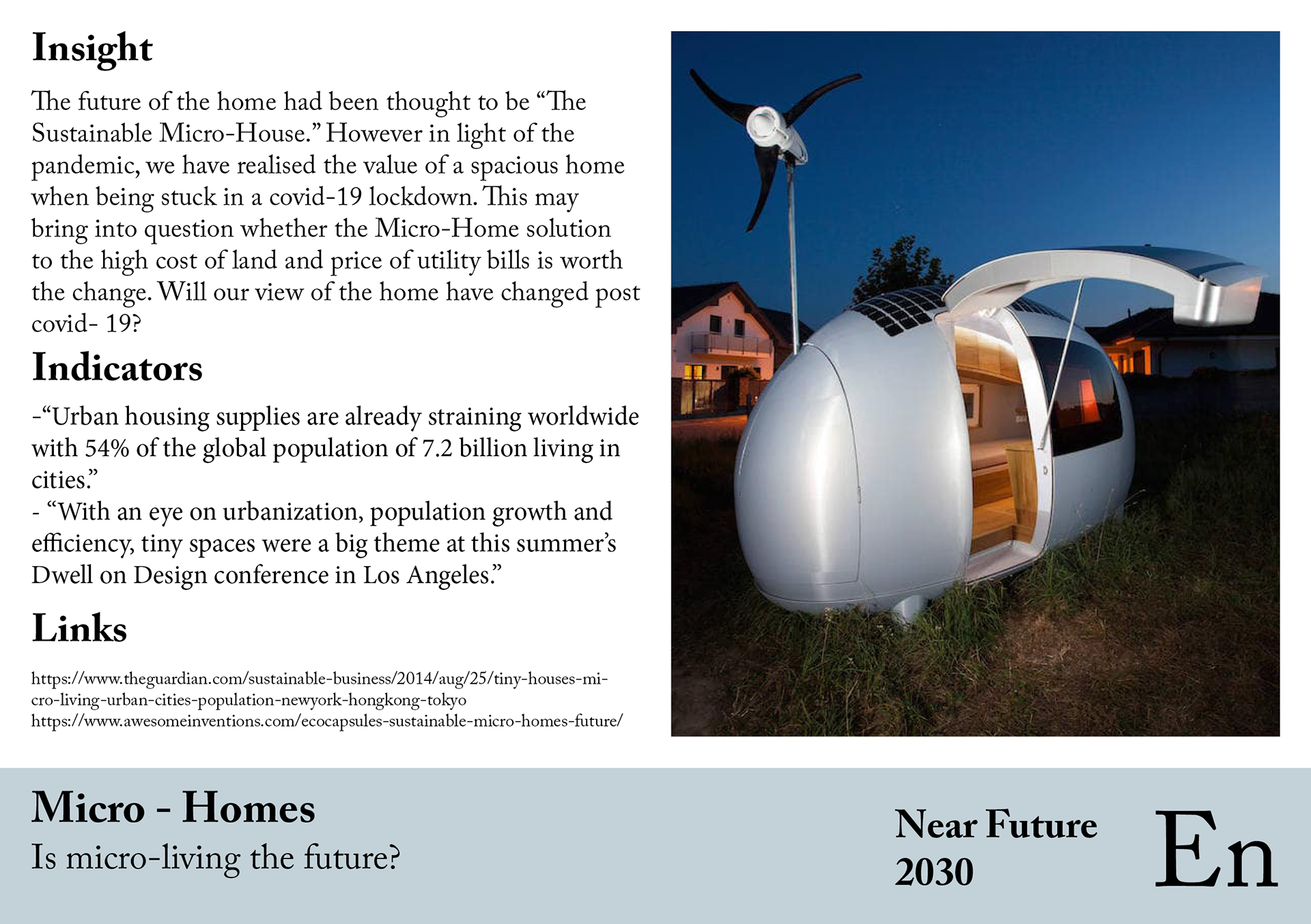

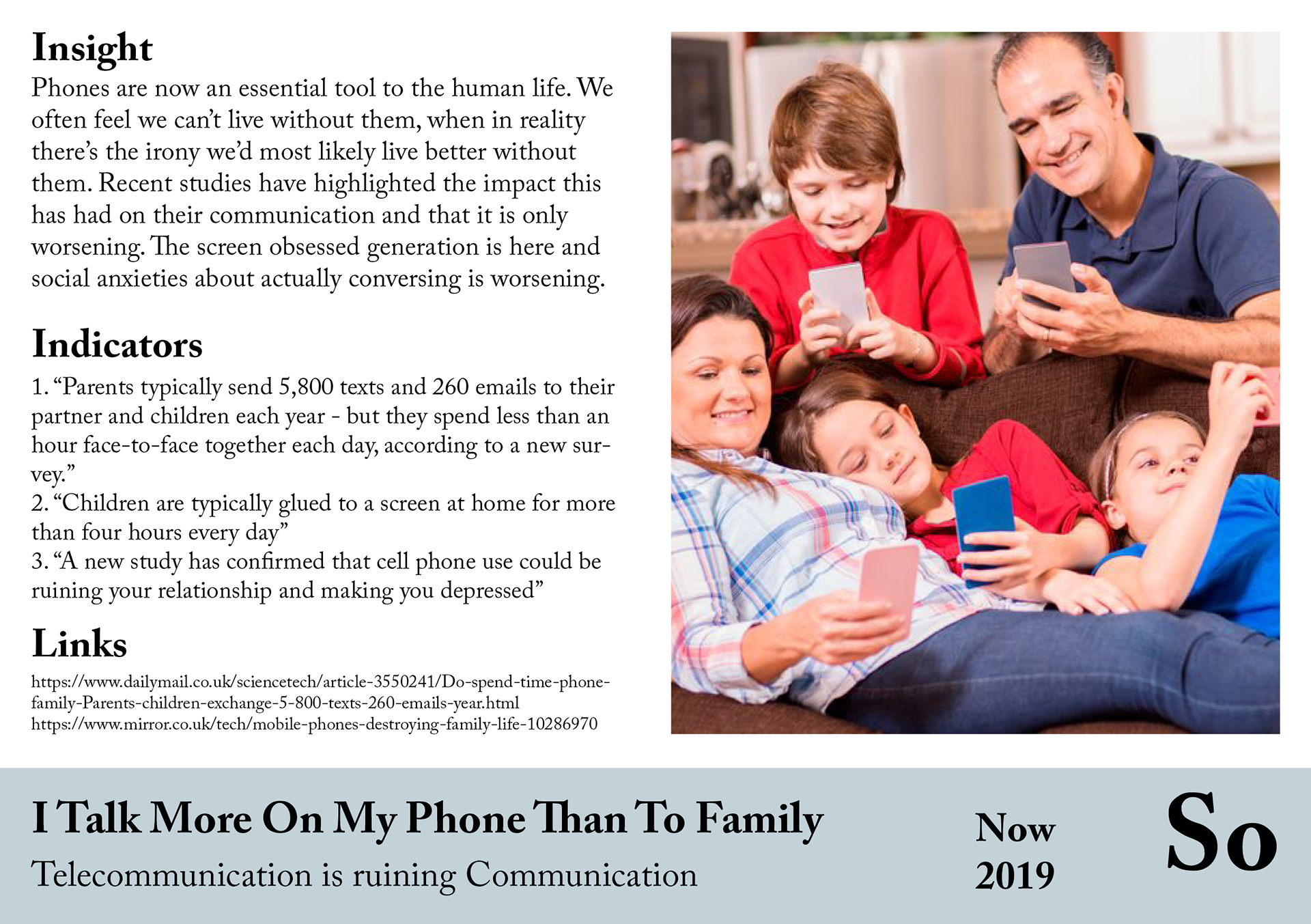








By my first expert input day I had decided there were four potential avenues I wanted my project to lead into. From my conducted interviews and google form results, I understood that the pandemic's lockdown had created a substantial change in toddlers behavior. Unable to learn distancing from their parent through nursery and socialising with friends, young children had become 'clingy' with one or both of their parents (Direction 1). Secondly many adults and children had felt their privacy had been invaded. Whether it be lack of 'alone time' due to other family members always being around them or invasion of school and work as everything now took place in their own personal environment (Direction 2). Leading on from this, homeschooling had also become an issue, many parents found it challenging having to become their child's educator and understand how to teach the curriculum (Direction 3). Lastly I had identified another struggle heavily emphasised through the pandemic. Parents with younger children especially were having difficulties with their work/ life balance. Even worse was the 'parental guilt' inflicted upon them as they were unable to communicate that despite being home they were still occupied with work and couldn't play (Direction 4).
Before conducting my interviews I considered what questions I wanted answered from both my initial inspiration thoughts and what had arisen in my research and google forms. I left some of my questions open deciding that I would aim to use the ideation technique “Yes, and...” of sorts to gently push our conversations to expand on the insights discovered upon discussion. Summarizing my interviews into key quotes, I was able to identify a pattern. I grouped my important insights into the three categories they fell under : Education, Spaces and Work - Life Balance
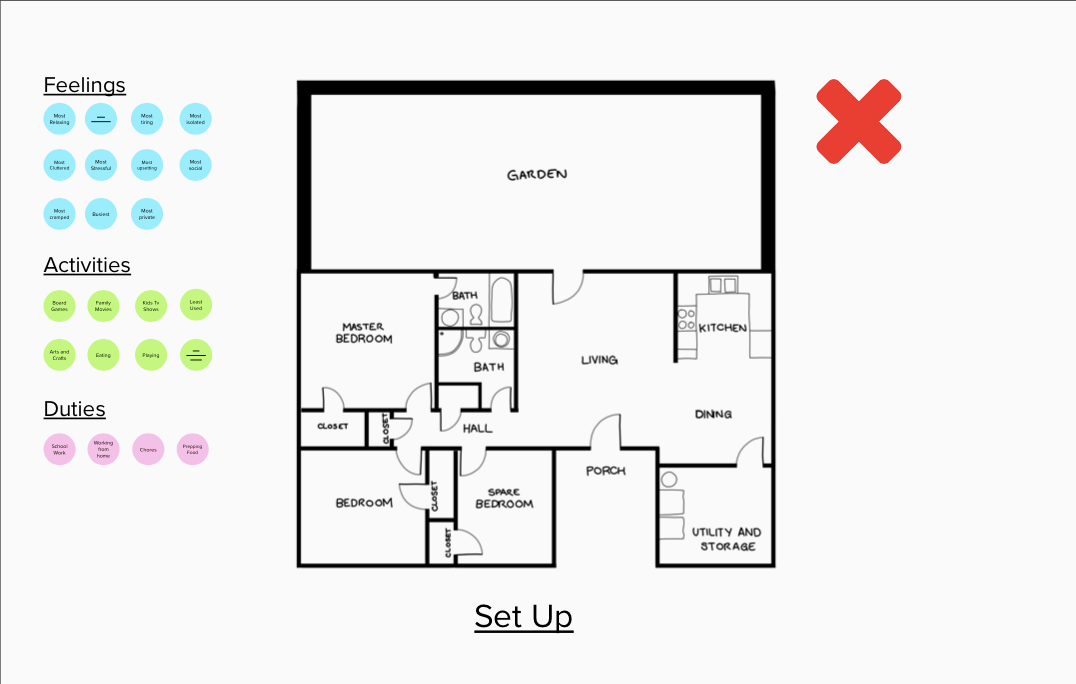
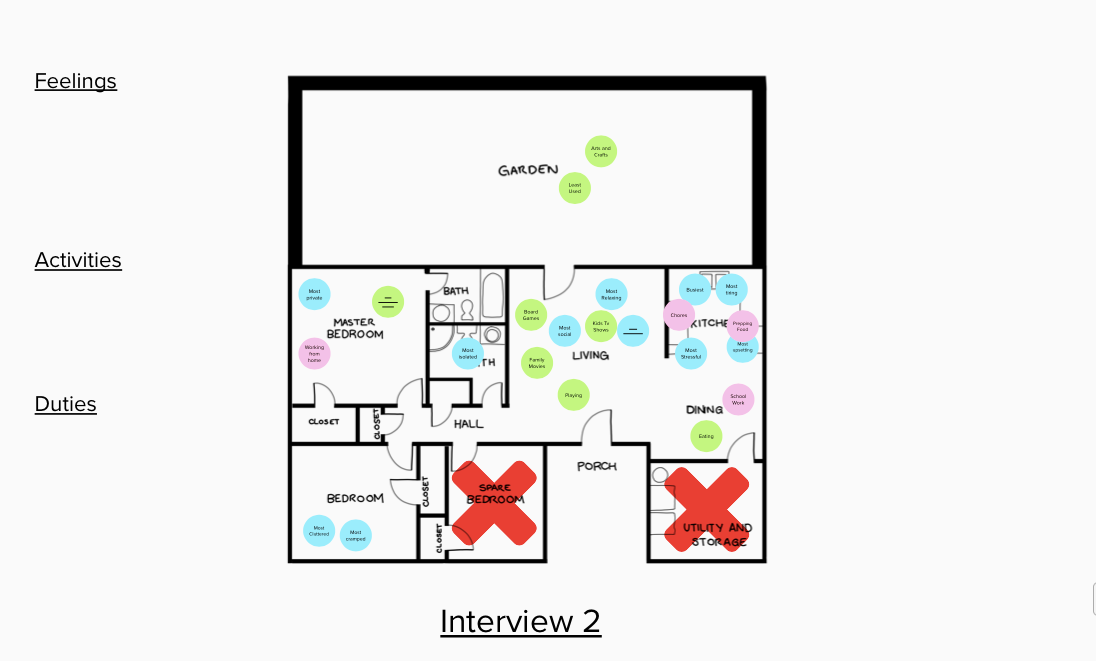
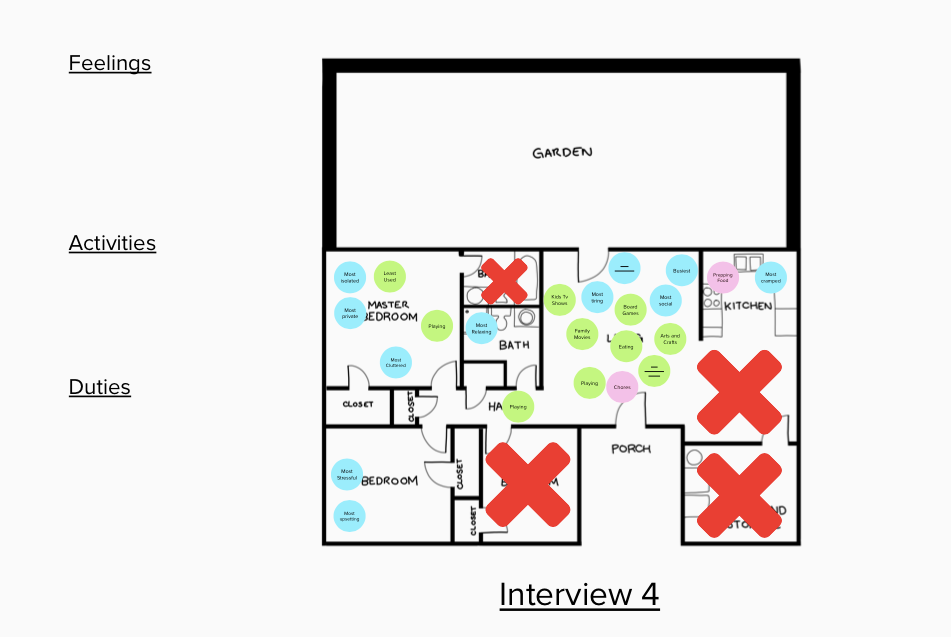
Design Scaffolded Interviews Via Zoom: On Mural I designed a rather basic family home floor plan and sticky notes with various activities, feelings and duties. As I talked to my participants I asked them to firstly tell me if there were any rooms I had missed or need- ed to remove from their floor plan. I then asked them to plot where each sticky note should be in their home, which feeling/activities did they asso- ciate with most in a specific room.
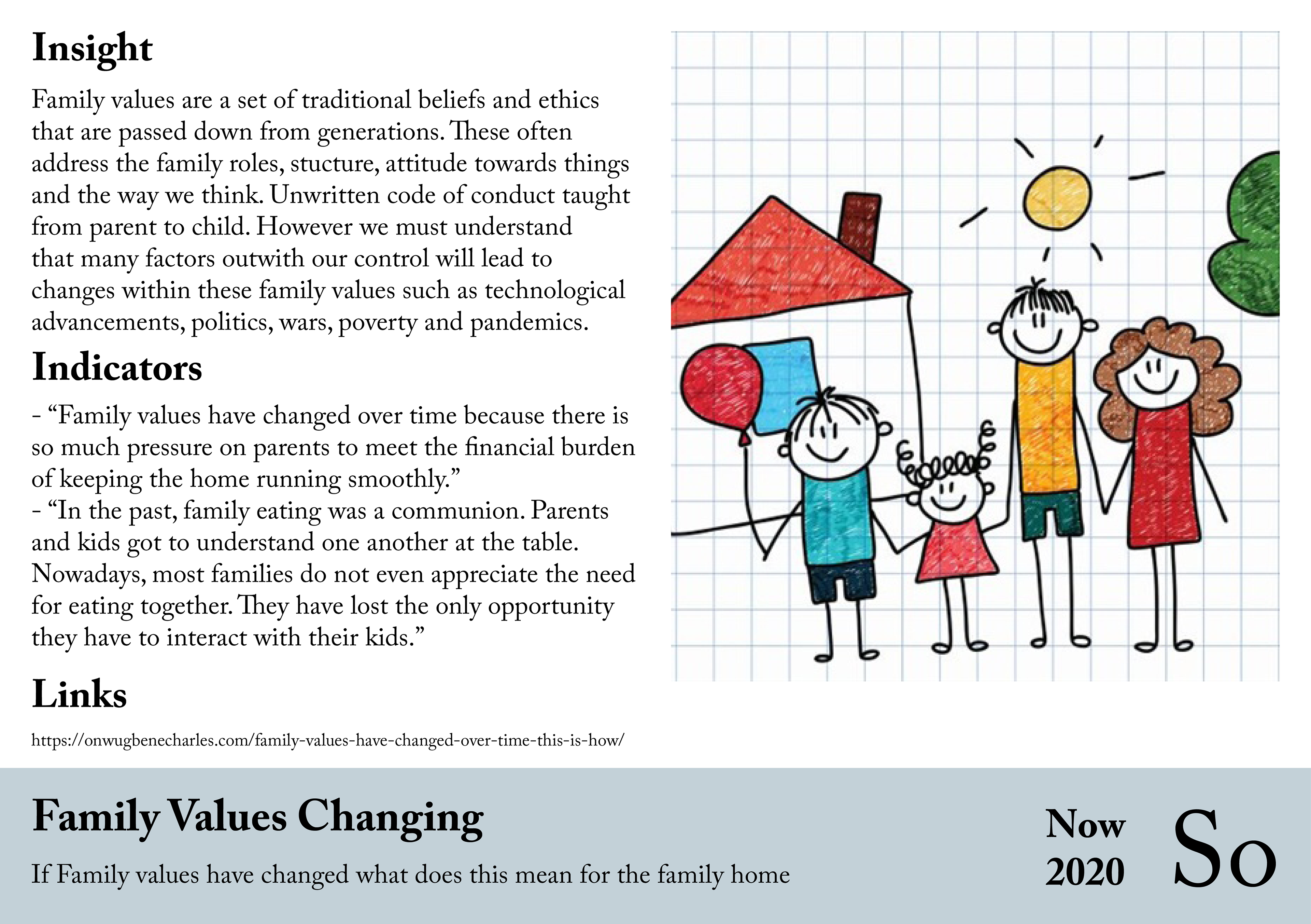
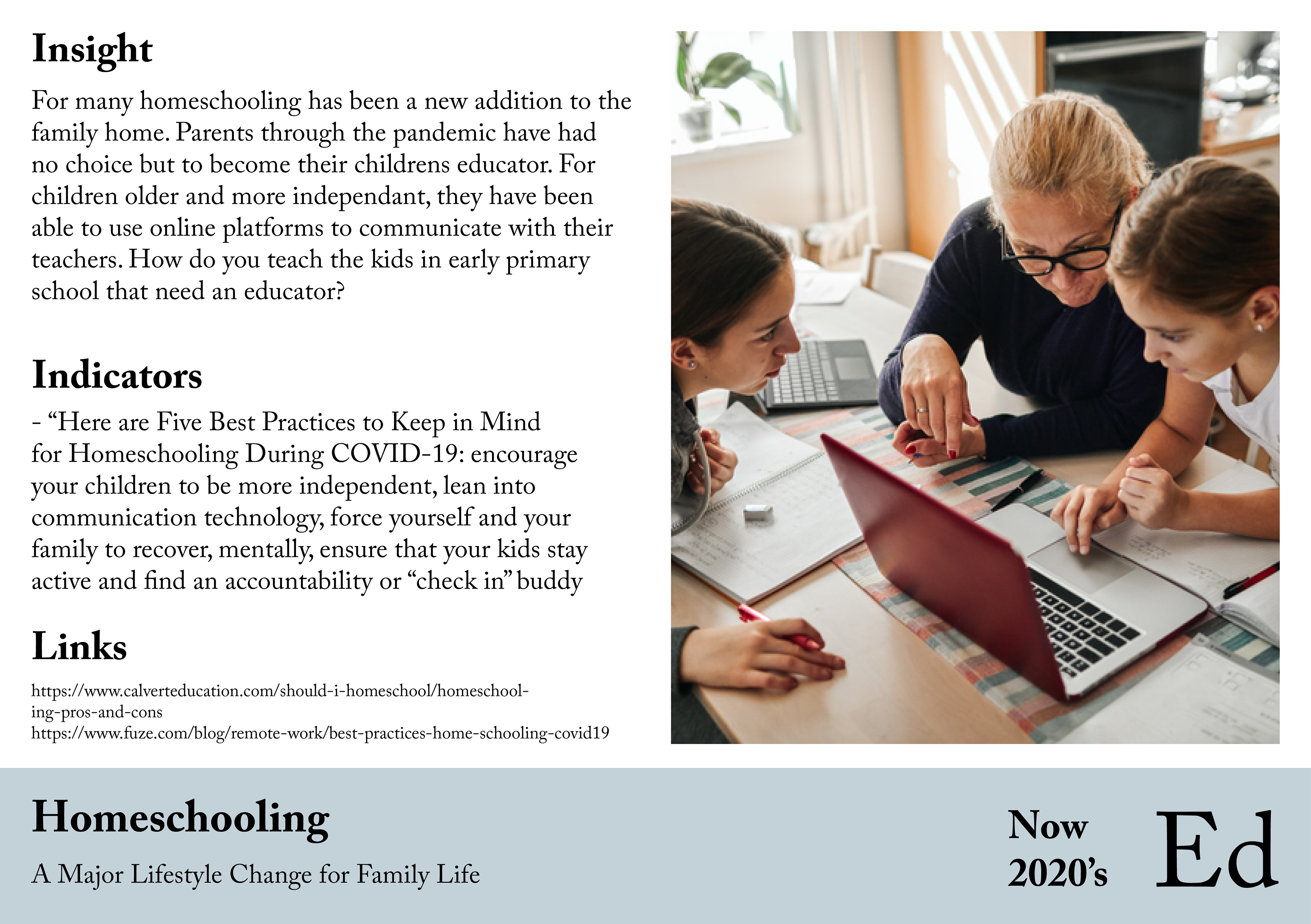
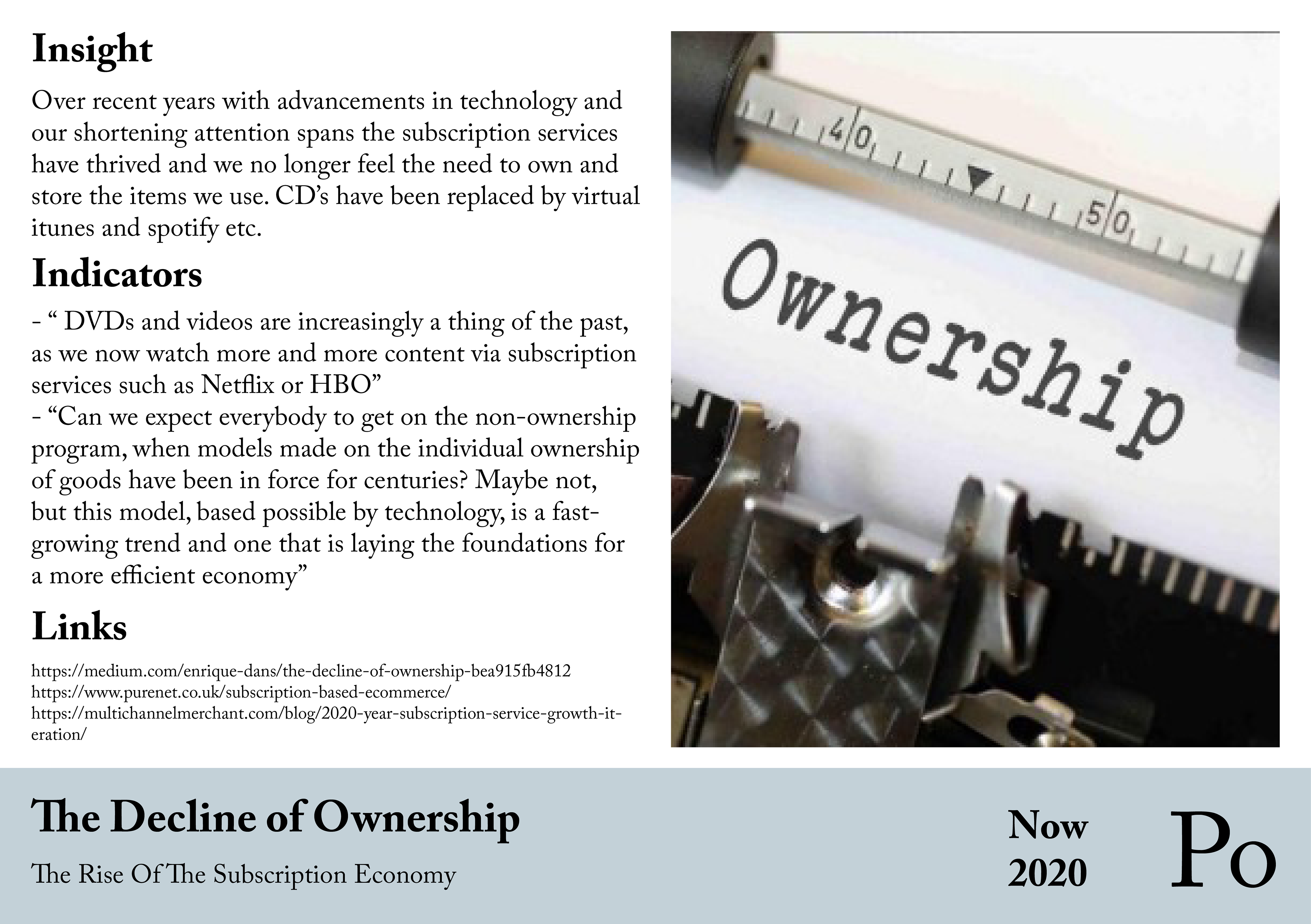
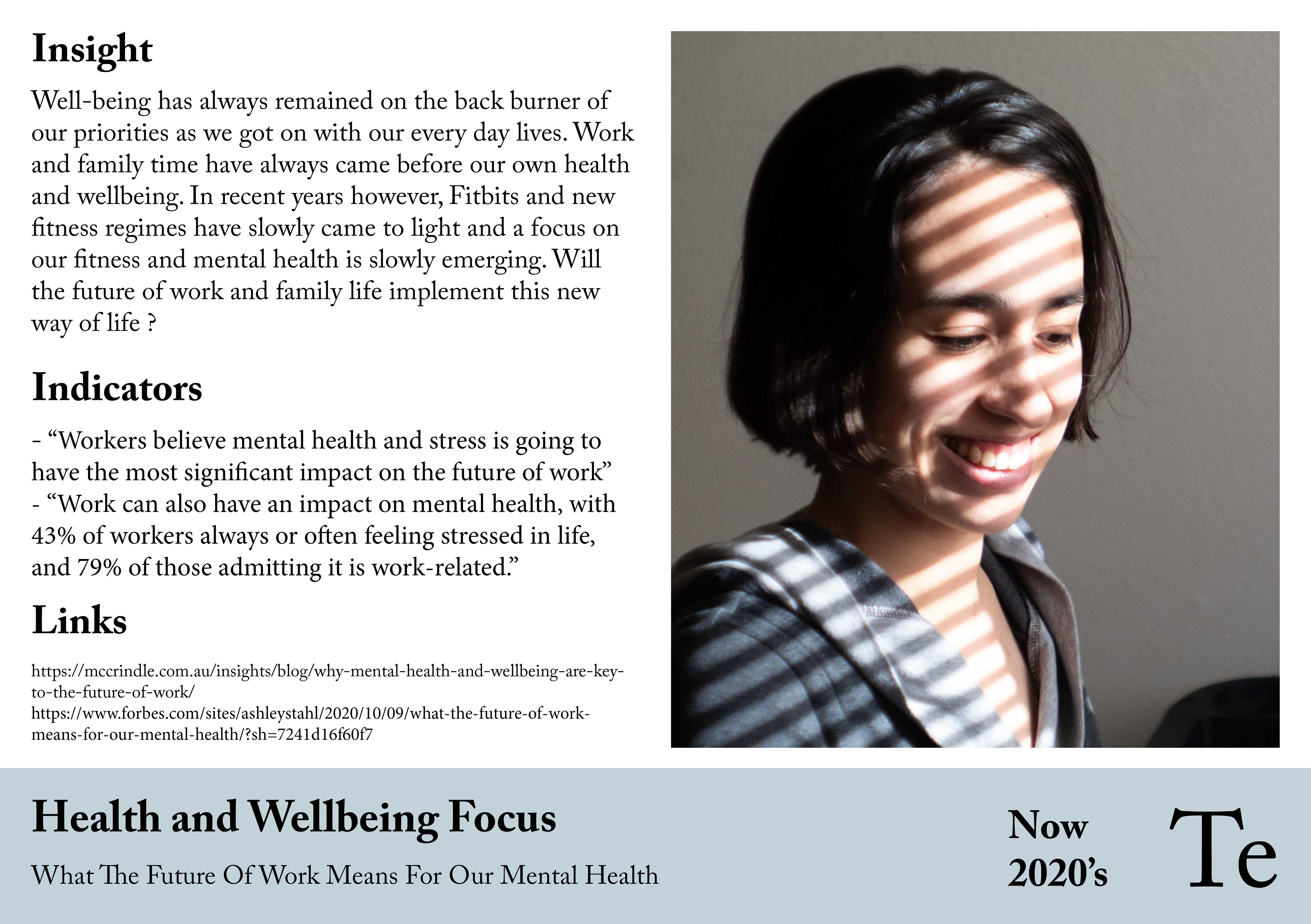
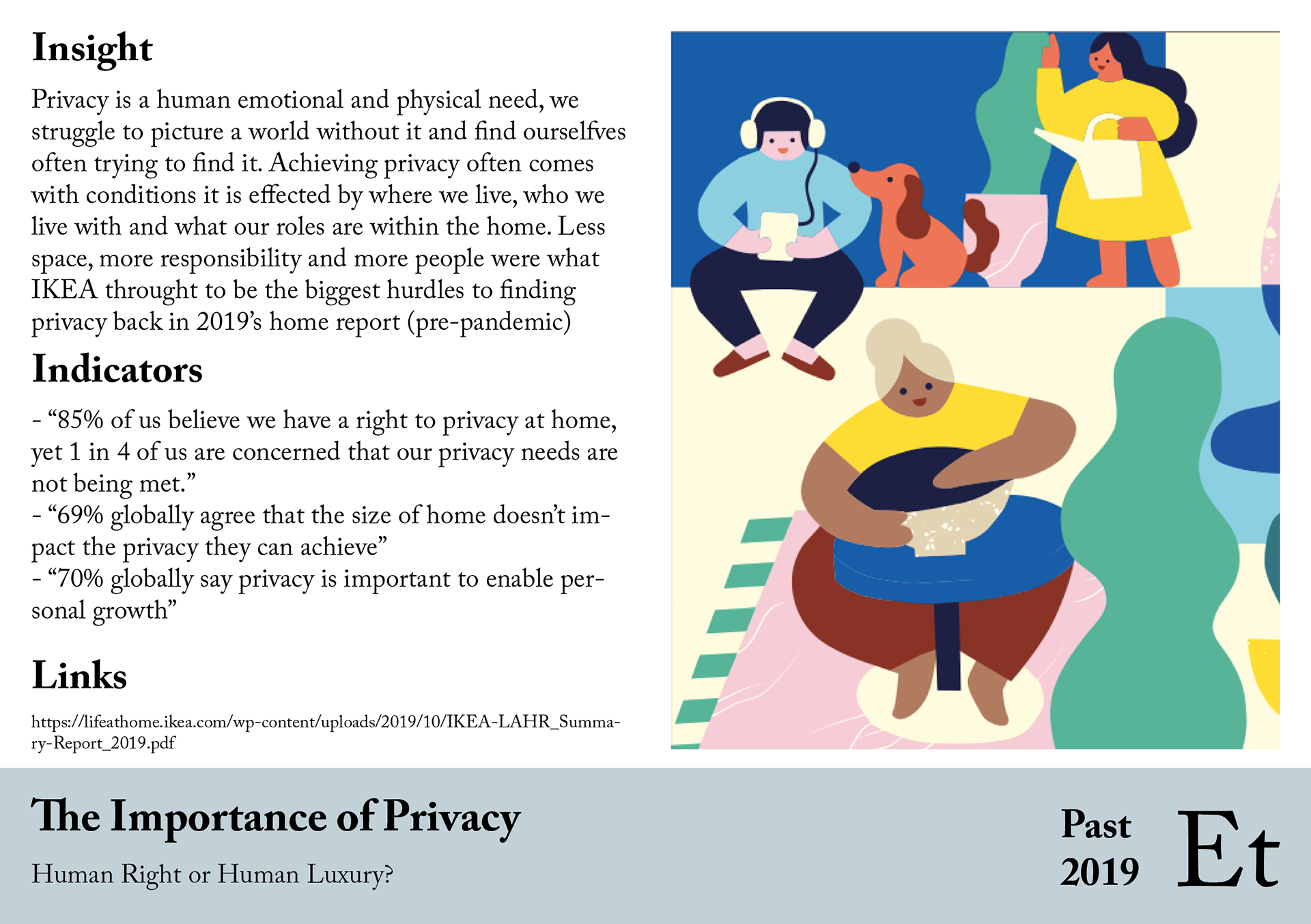
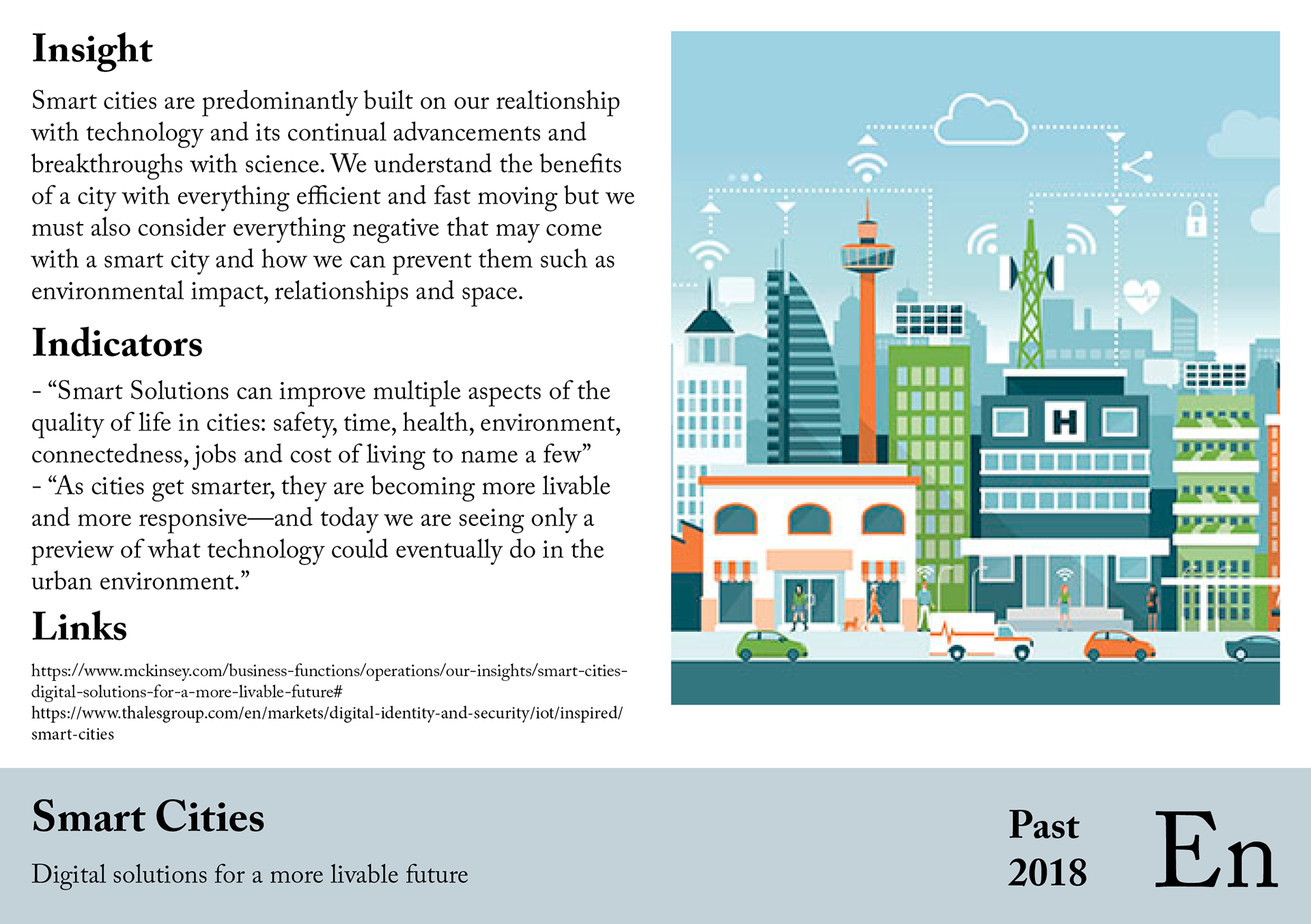



Forming more steeeple cards gave me the opportunity to widen my scope and speculate about the future from more credible standpoints. My project became more structured from here with it’s subcategories of: child development, spaces, work-life balance and education. I took great interest in the predicted rise of subscriptions with only temporary own- ership. Forest school was also something I noted of great value, it expanded the classroom out with the limiting four walls of school and into a more sensory and every changing environment.
HOW DOES THE DESIGN OF YOUR DOMESTIC ENVIRONMENT SUPPORT AND NURTURE YOUR CHILD’S DEVELOPMENT?
A key turning point in my project was producing my design question. It gave more definition to my desired aim and allowed me to return to my user participants with a more direct question.
My predictions left me with some peculiar and interesting speculations for the future including that without proper homeschooling guidance children would only learn the chosen trade of their parents. Teaching aids in the various subjects may be required to broaden education at home.

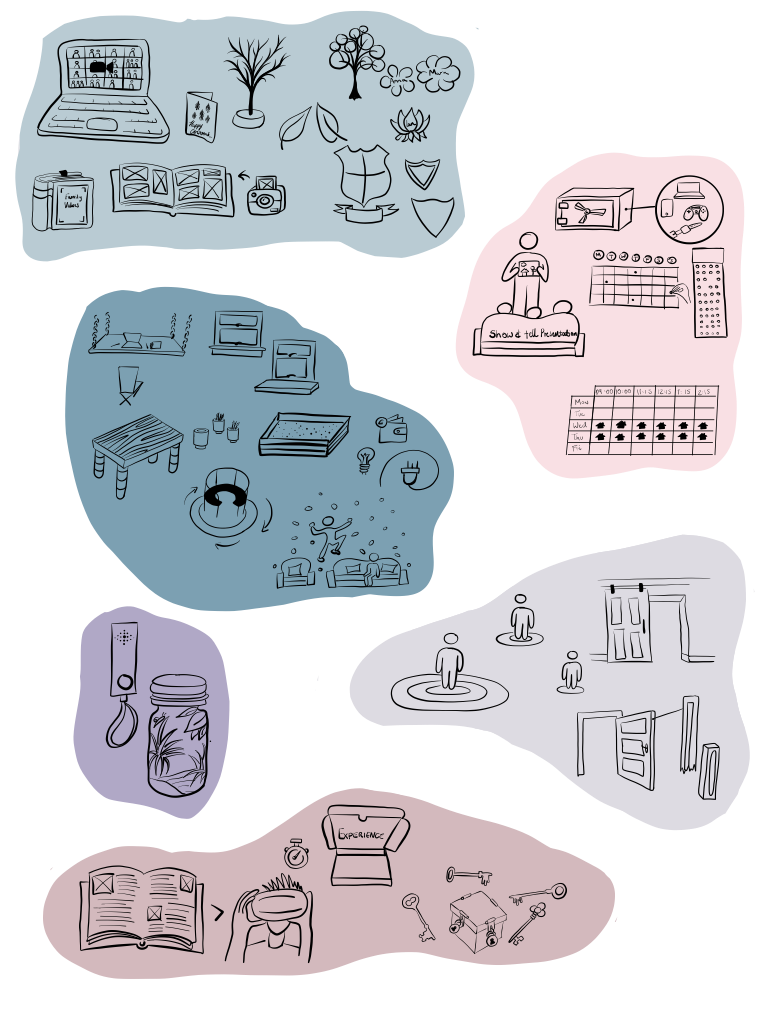




01 Family Experience Service
A subscription service that provides you with all the resources required to have an educational activity with your child in your home. Decide on frequency of new experiences and once the activity is finished all resources are returned therefore not taking up permanent space in the home.
02 Share the Day
A device that enables the user to record sounds and smells that they experience throughout the day. The family then gather at the end of the day and present their findings sharing stories and experiences whilst boosting communication and presentation skills.
03 Family Values Book
A book created together about the combined values of each member that make up what it means to belong to that family. One may value respect, another honesty or amity which in turn sets rules in the household and brings a sense of pride and belonging.
04 Representing private spaces digitally
A digital floor that you interact with and display your need for private space or company and communication. A subtle polite way to either invite or decline interactions when in the home. Inspired by Nathan Destro’s personal space pro- tector.
Role playing as Mark trying to understand his thoughts and feelings about his parenting situation
Mark and Eve have just recently fostered a young girl named Sophie. They know very
little about her and want her to feel comfortable and safe in her new home with them.
little about her and want her to feel comfortable and safe in her new home with them.
Sophie has had quite a difficult few years to start off her life with a very challenging relationship with her birth parents, it is going to be very hard for her to open up and trust Mark and Eve. She is struggling in school falling behind in her education and is very shy. She finds learning boring having always felt behind in her school work due to her circumstances. She loses interest quickly when she cannot understand something right away. She will need to be taught in a more playful and fun way in order to engage in her education properly. As Eve picks her up from school Mark receives a phonecall from Sophie's teacher letting him know of her concerns with Sophies schoolwork. He tries to talk to her about it when she get's home but Sophie shrugs him off feeling embarrassed and not close enough with him to have a conversation. Later he is trying to make dinner but worries she will not like what he has cooked but will be too polite to say so.



05 Playtimes Tables
A dining table that’s legs store educational resources for playing and learning at home. This temporary educational space can be tidied away when not in use, when
the canisters storing the materials are removed for use the table is lowered therefore making it a more respectful height for the child.
06 Education Fort
Predominantly an adult owned item in the household, the couch looks unchanged until the cushions are removed. Behind each cushion are educational canvases attached on
the back. Children are encouraged to interact with these learning canvases and build a temporary classroom as a fort in the comfort of their own living room.
the back. Children are encouraged to interact with these learning canvases and build a temporary classroom as a fort in the comfort of their own living room.
07 Opening Doors for Education
Utilizing a wasted space of inside the door itself, a thin strong fold out table can by extracted from inside the door and rotated to either become a study desk behind the door or extend out further to divide the room into two separate spaces.
Design Criteria
- Families need to utilise their shared spaces to facilitate working and learning from home. Although all families have had to adapt, Mark and Eve have had to create a child friendly welcoming environment from a previous child free zone my design must be conducive to aiding home learning whilst still being aesthetically pleasing for adults.
.
- Mark needs to initiate conversation and establish a rapport with Sophie.The design should encourage family engagement and improve communication.
- The product/service must support and improve the child's educational development in line with the curriculum for excellence. Due to Sophie's circumstances she has fallen behind in her schoolwork therefore Mark does not need to just maintain her educational level but must provide additional support to help her catch up.
- It is important that the educational aspect to the design is readily available without the family feeling that it is infringing on their relaxation time and invading their space.
- The design should support the parents to raise their awareness of the educational stage their child should be achieving. Mark will have to establish a relationship with Sophie where she will feel comfortable enough to ask him questions around schoolwork and the design must supply him with the resources to facilitate this.
- The design must be age appropriate to the child and has the ability to adapt and grow with them.
My design criteria considered what the general parent would need from my product then more specifically how it could benefit my extreme user: a foster family. This alongside my six hat thinking allowed me to really understand what requirements my design had to meet in order to be of value to my intended users. I was able to select two of my designs to take further that met my criteria and had the most value.
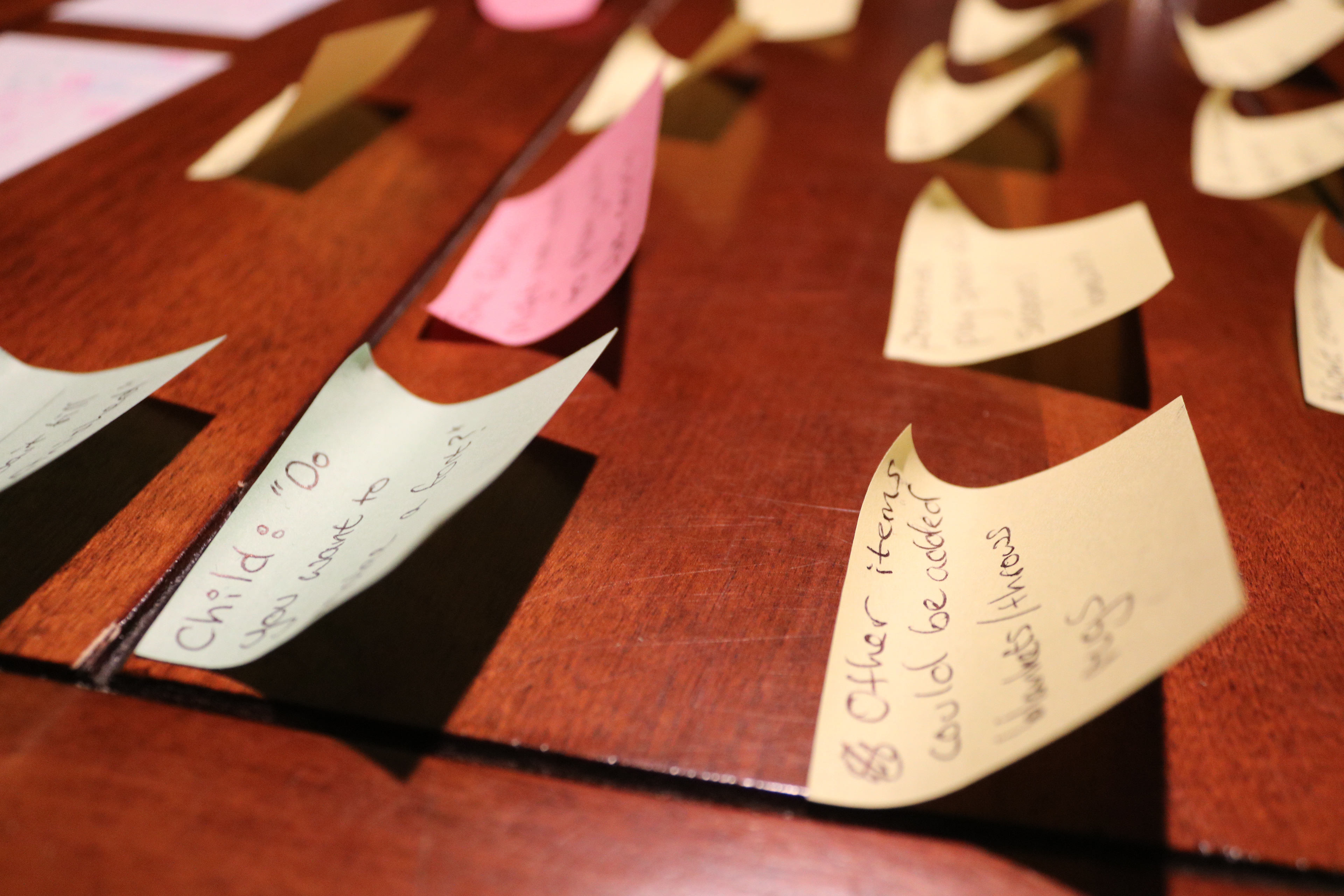

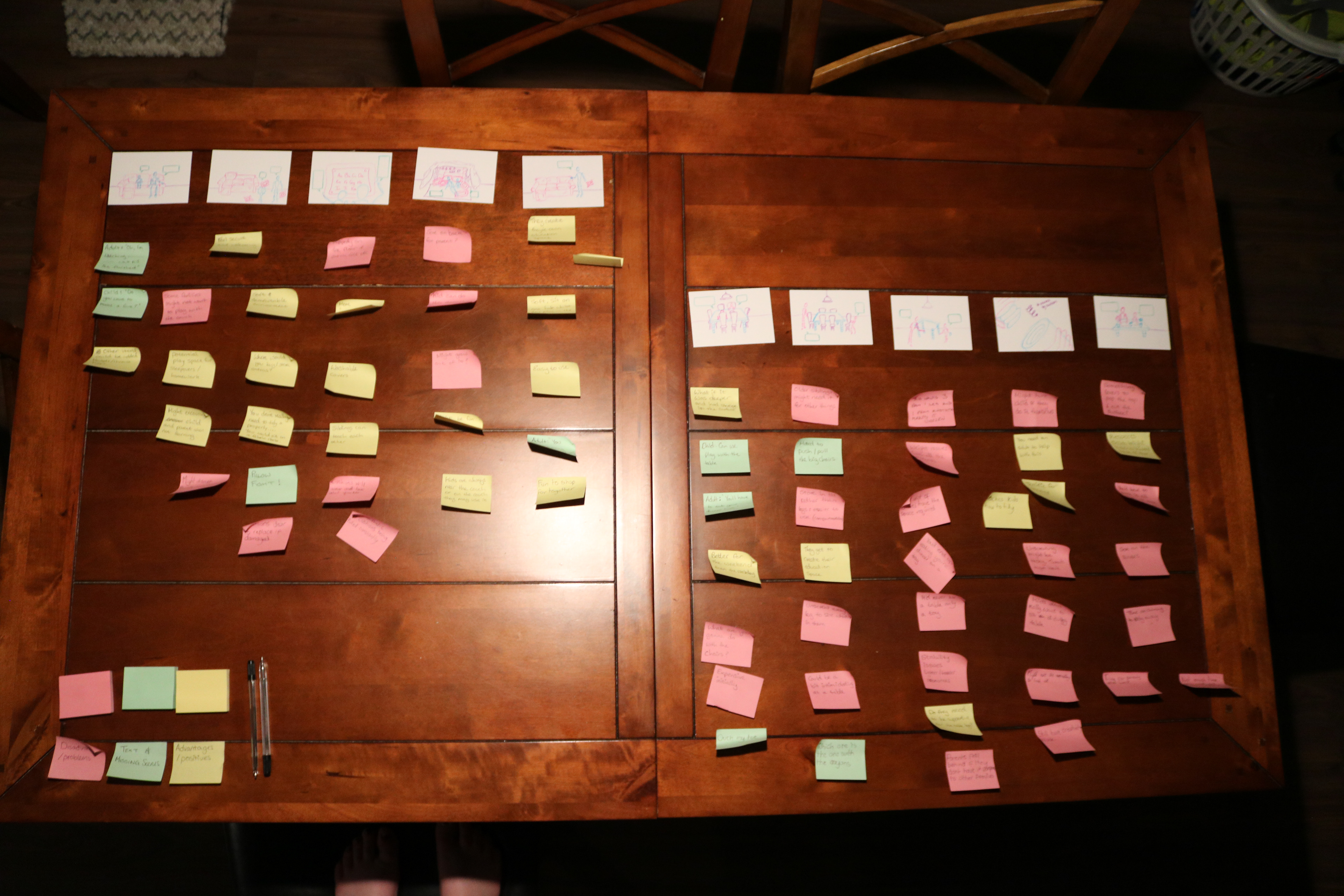
Continuing with user engagement for my design I reached out to families I had contacted previously with children my target age. By taking advice from expert input days, I drew up simple storyboards of my two selected concepts. Having talked through both my designs and their scene by scene scenario I asked them to participate in my workshop by writing advantages (on yellow sticky notes) disadvantages to the designs (on pink) and creating text for the speech bubbles I had left blank - this was most helpful as I was able to get a clearer understanding on what might actually take place in the scene from parents previous experience. The couch and the dining table are often considered adult owned objects despite being in family spaces in the home; through both my designs I wanted the space to become a more balanced ownership between parent and child. Both concepts intended to utilise the shared family space and encourage conversation without any digital interactions to improve family engagement.
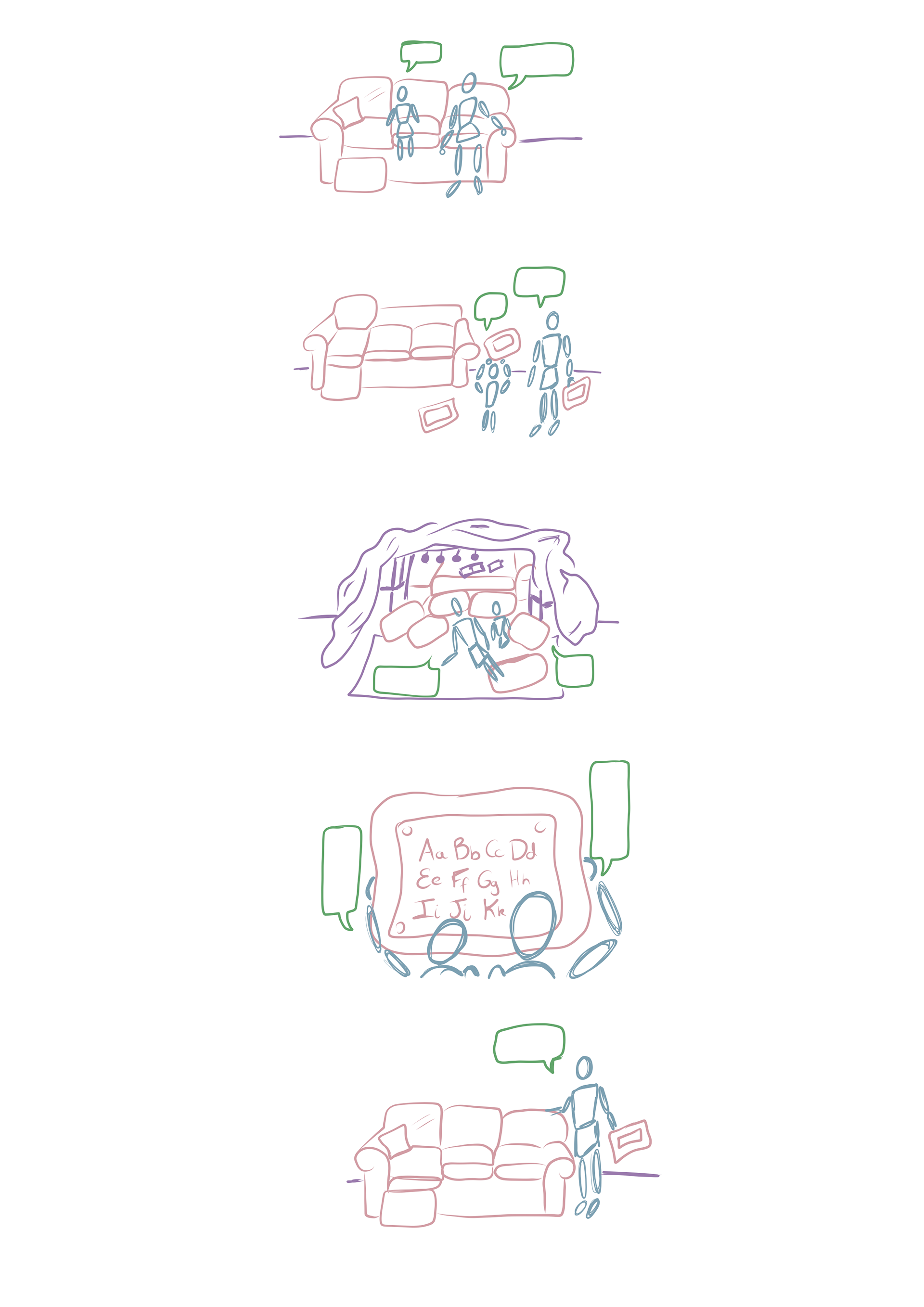

01 Educational Fort “You could just grab a pillow and start learning. Learning opportunities are far more frequent due to accessibility” - Parent
Transforming the living room space into a classroom by simply flipping a few cushions. On the flip side of the couch cushions are educational interactive canvases coinciding with
the child's curriculum level. Used as a teaching aid the parent can become
the educator in the home, schooling can take place in a comfortable safe environment. This design can be as simple or creative as the parent and child desire, they are able to sit on the couch with one pillow flipped to start the discussion or choose to construct the full immersive experience of the educational fort.
the child's curriculum level. Used as a teaching aid the parent can become
the educator in the home, schooling can take place in a comfortable safe environment. This design can be as simple or creative as the parent and child desire, they are able to sit on the couch with one pillow flipped to start the discussion or choose to construct the full immersive experience of the educational fort.
02 Playtimes Table “Adjusting down to the child’s height is something so important that wouldn’t normally have been considered” - Expert
Converting a predominantly adult owned object to a shared family piece, the dining table now stores educational resources within its legs. Children are encouraged to utilise this dining space as a place to be creative, learn, study and complete their homework. Simply unscrewing the cannisters not only gives them access to all the resources stored within, such as pens, pencils, magnets, crayons etc but will also result in a lowered table perfect for the child's height.

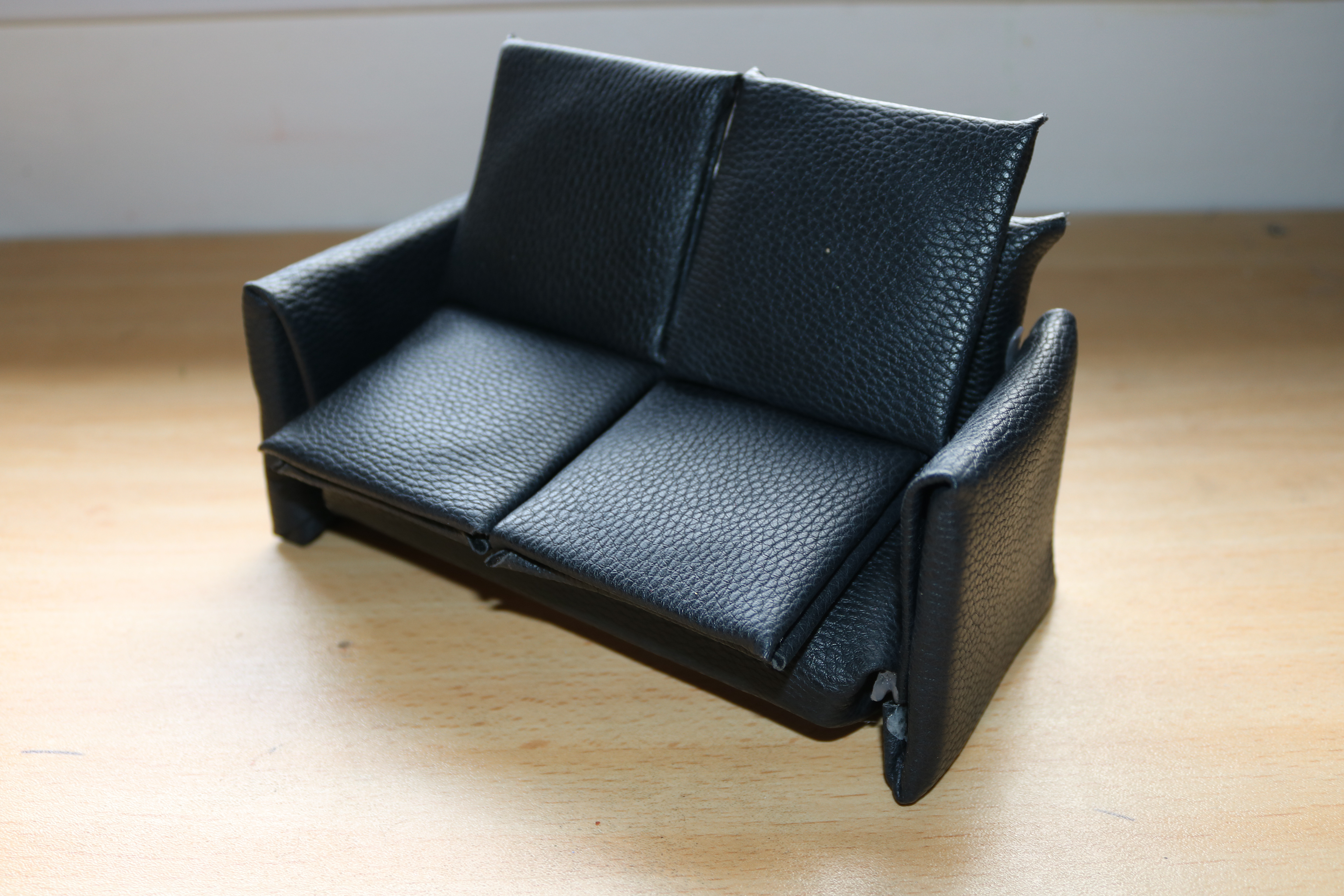
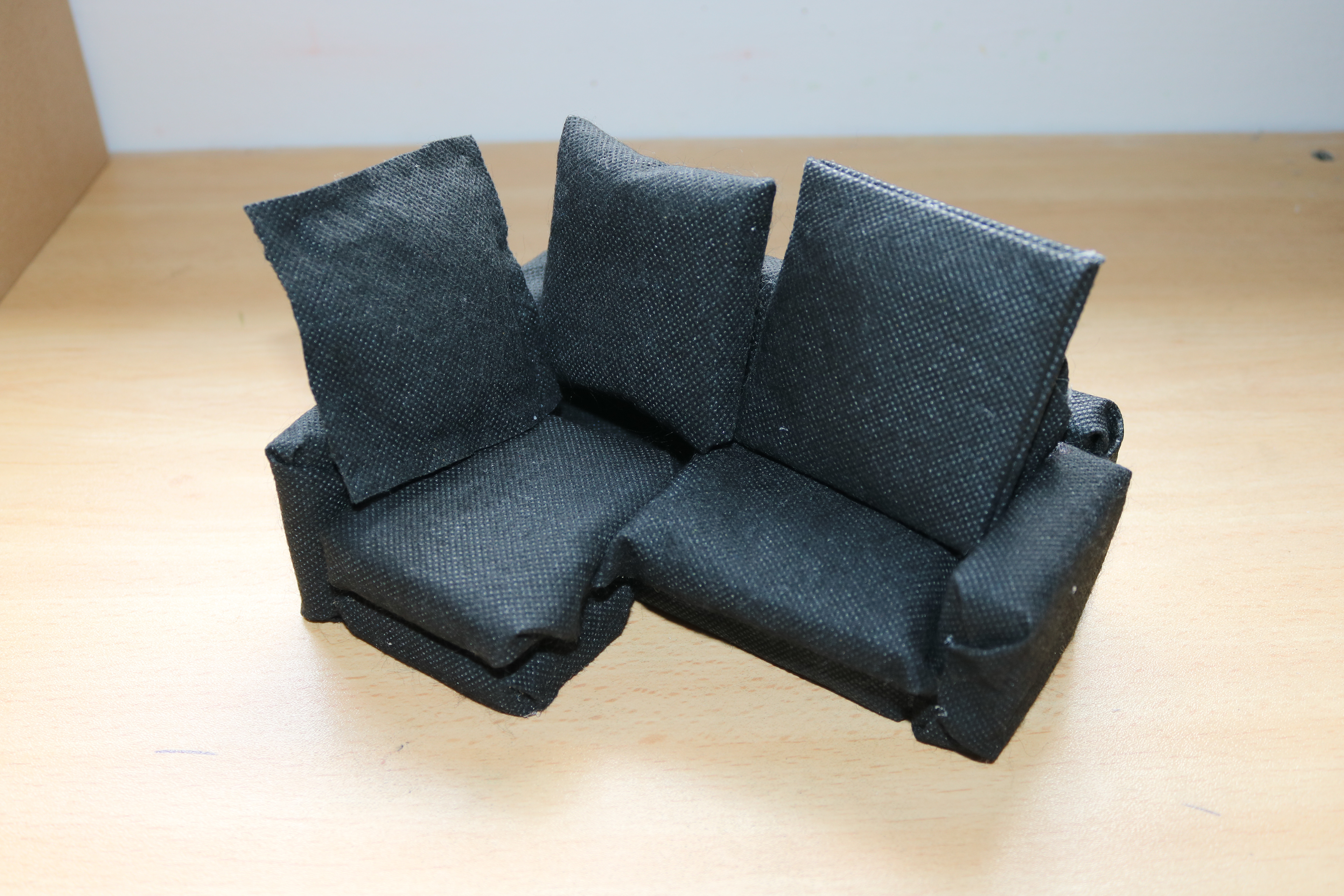

Sourcing materials from around the house I was able to make four scale models of couches that I could experiment with. I played about with various fort styles to add into my sketchbook and added little mock up interactive canvases to them.

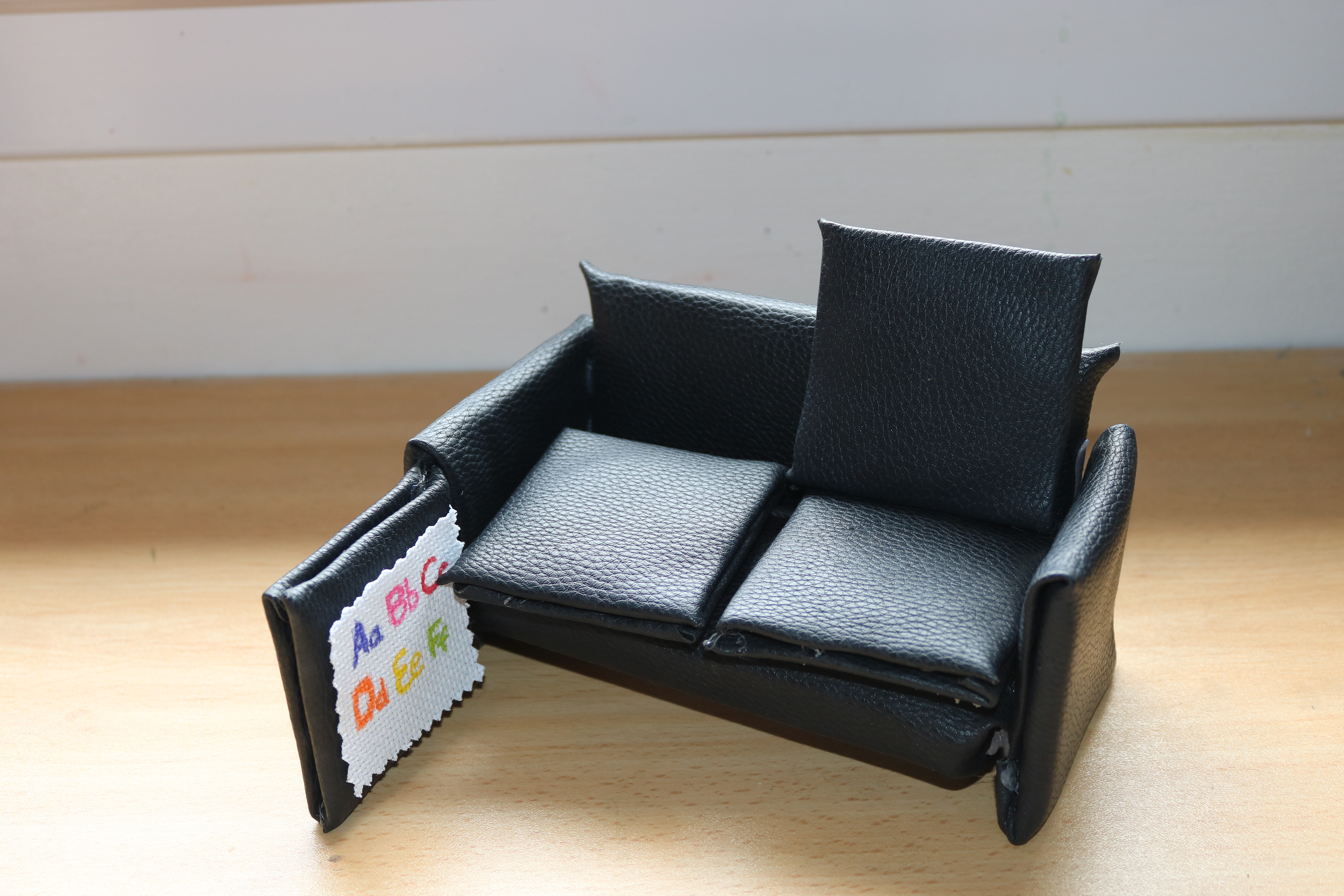

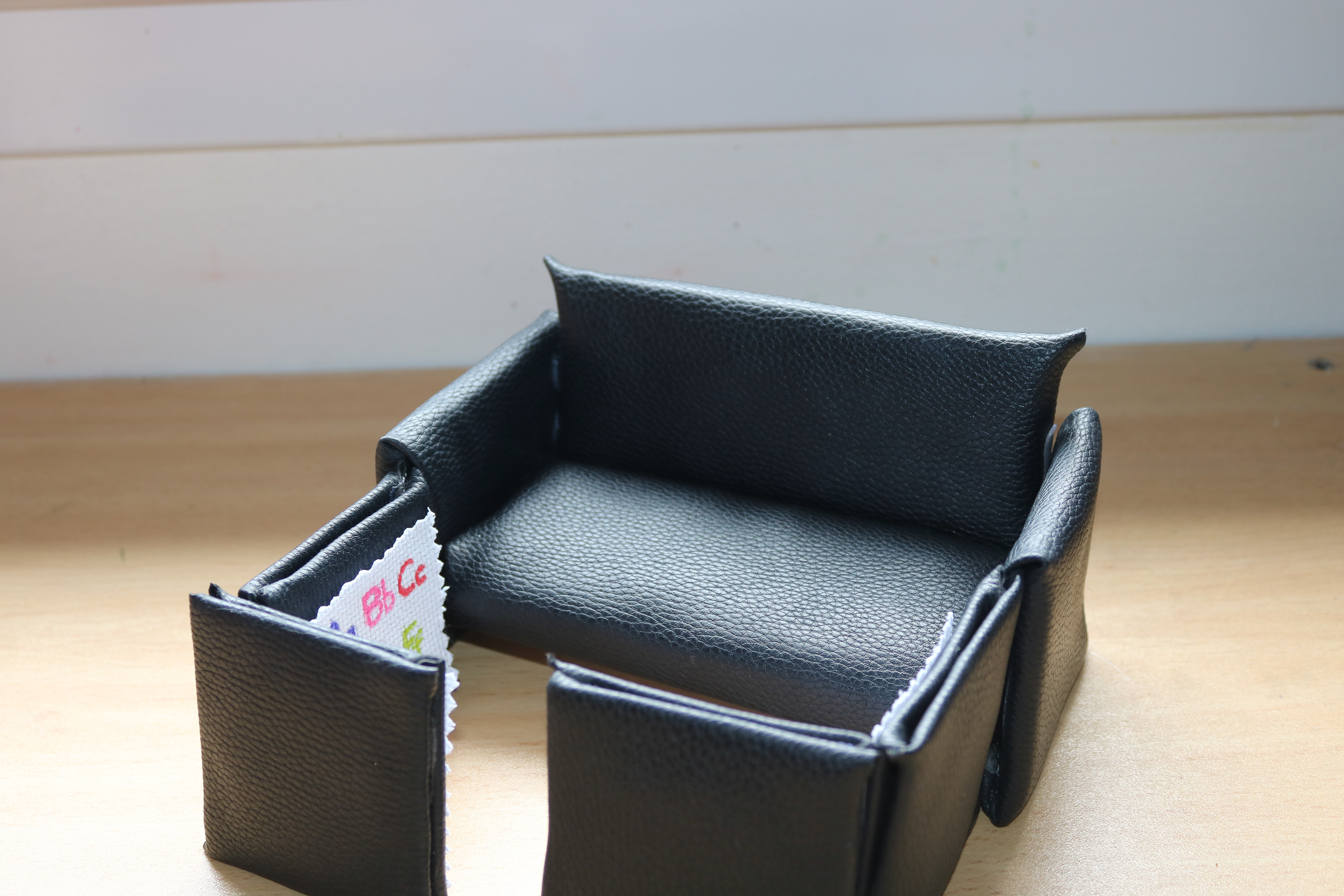
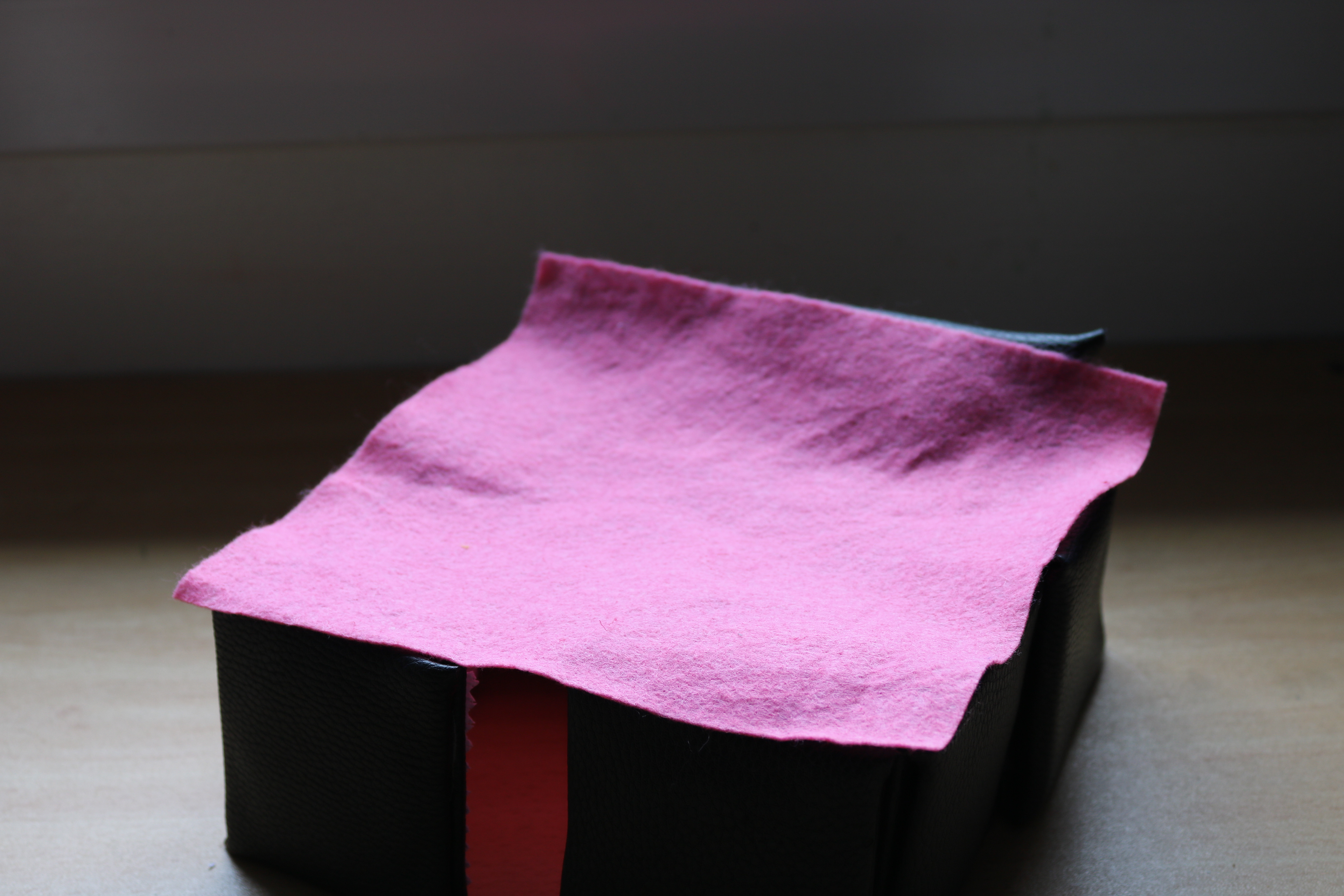

Parent and child sized fort with blanket added for "roof"
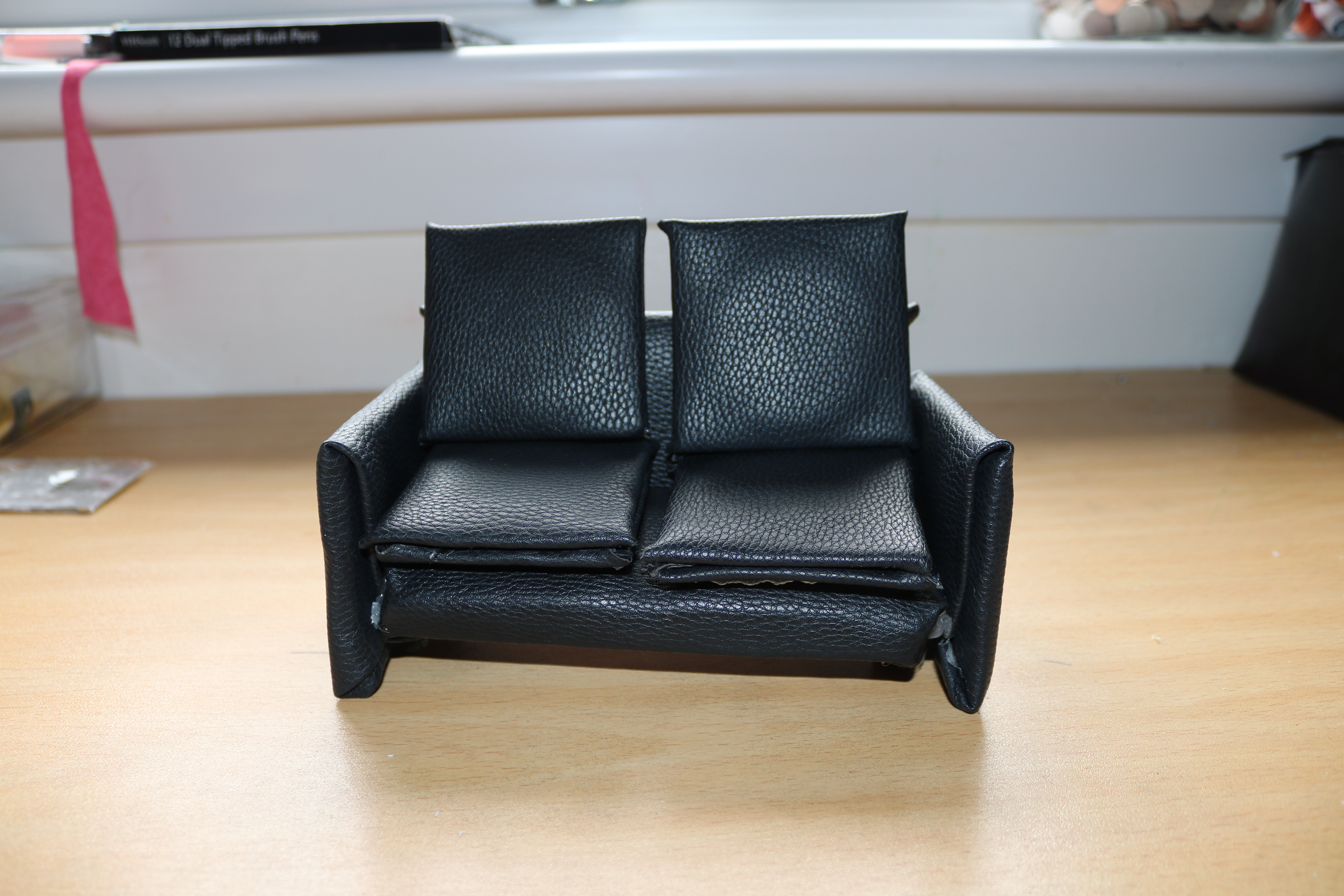
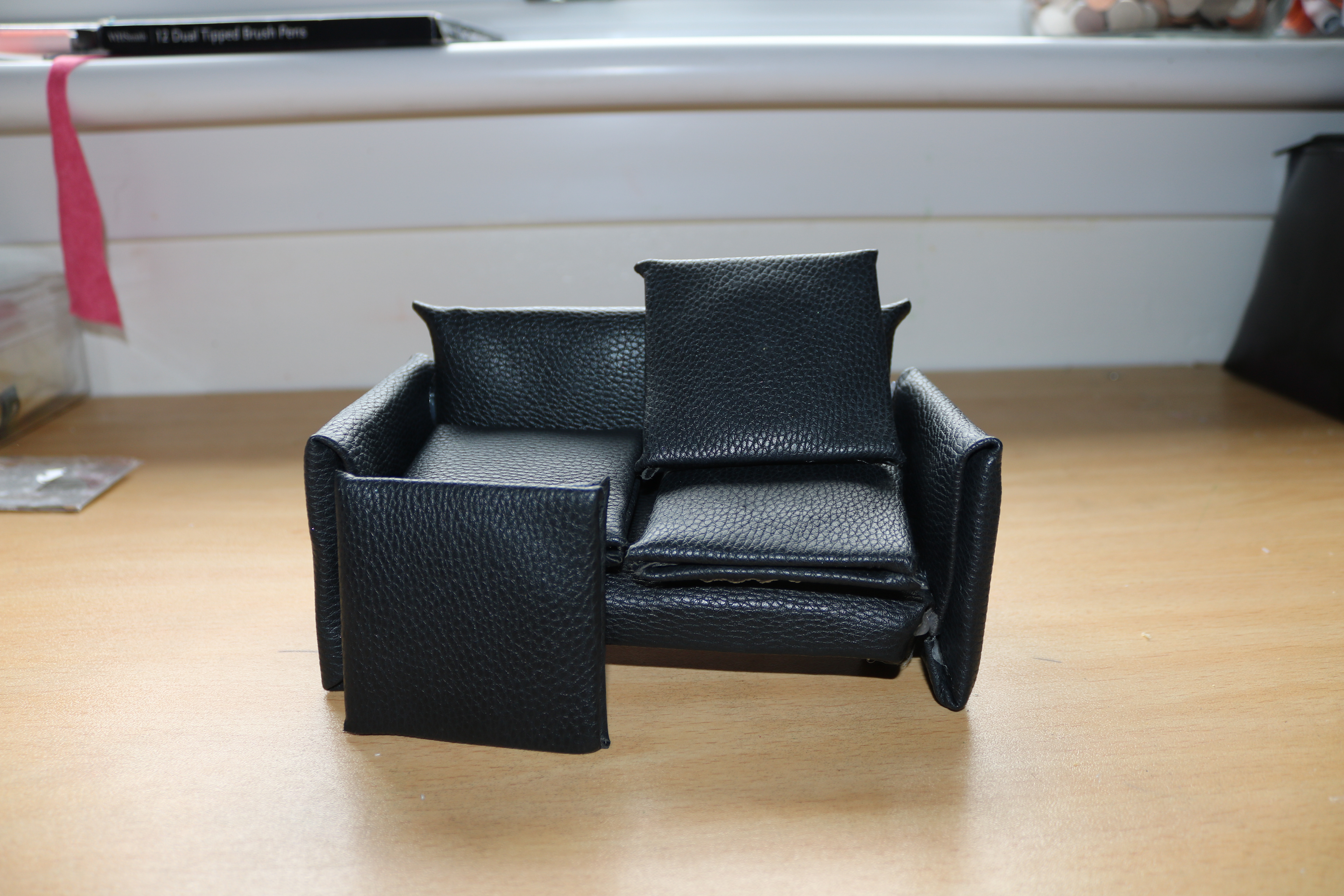

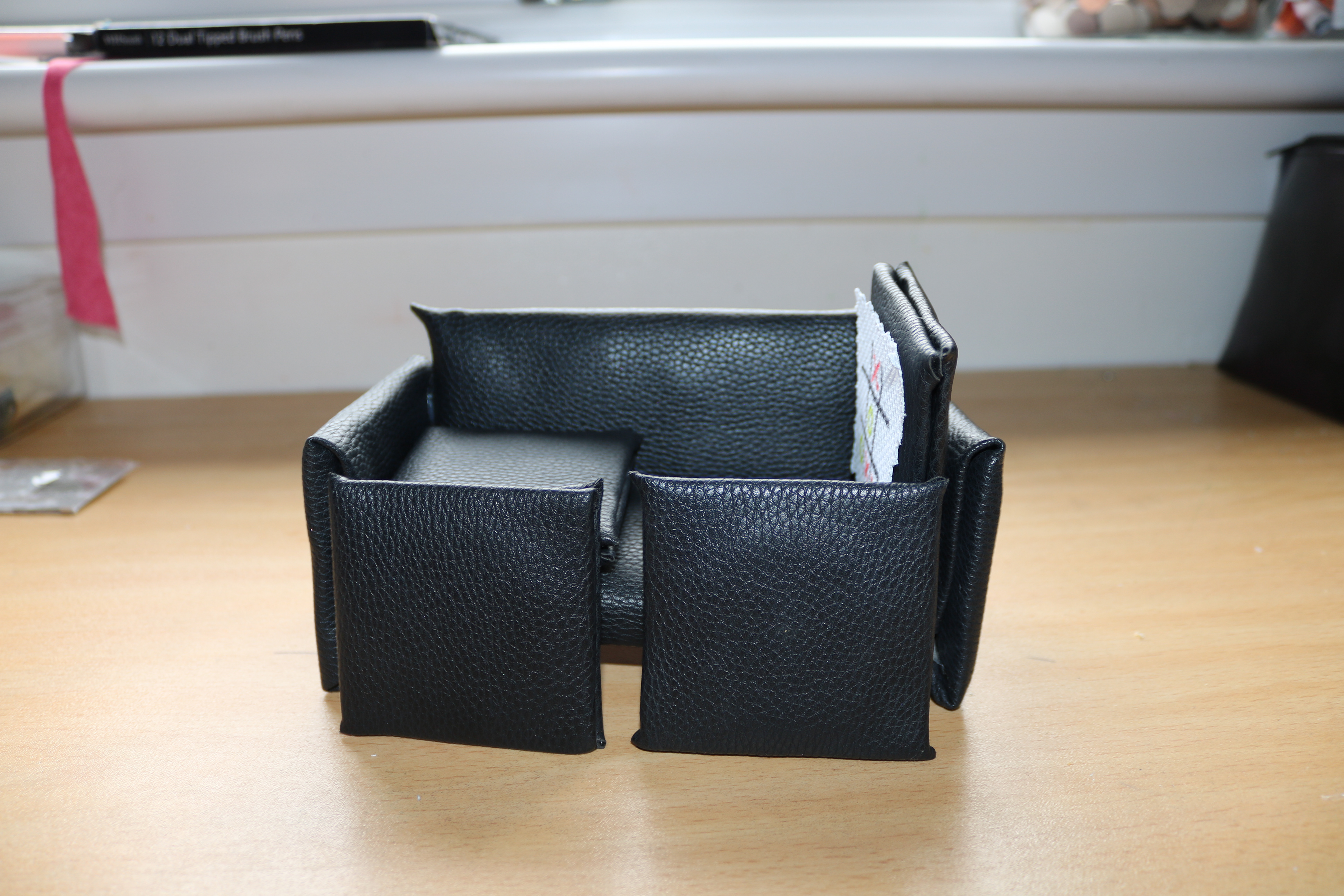


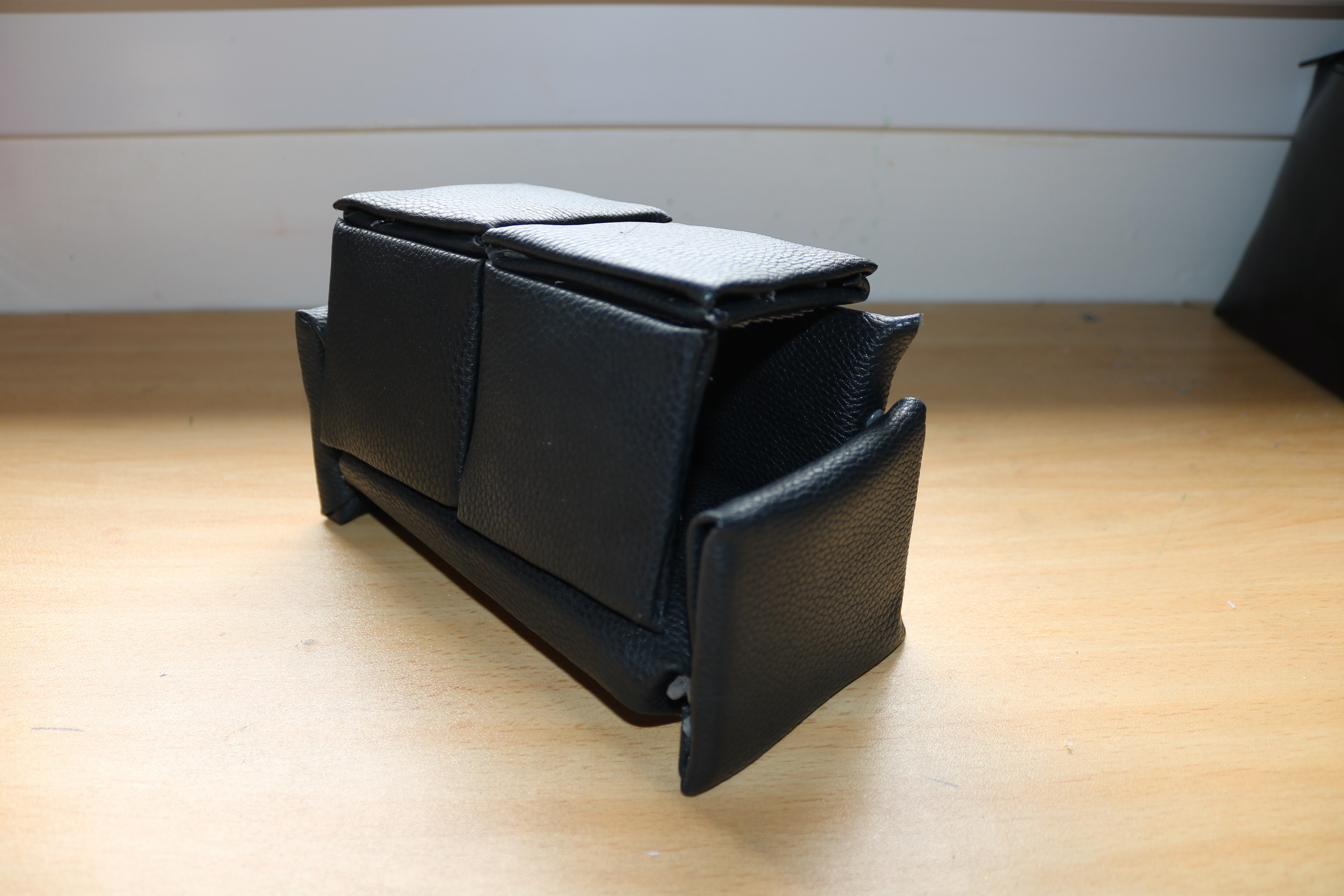
Child sized fort for independant learning or private space
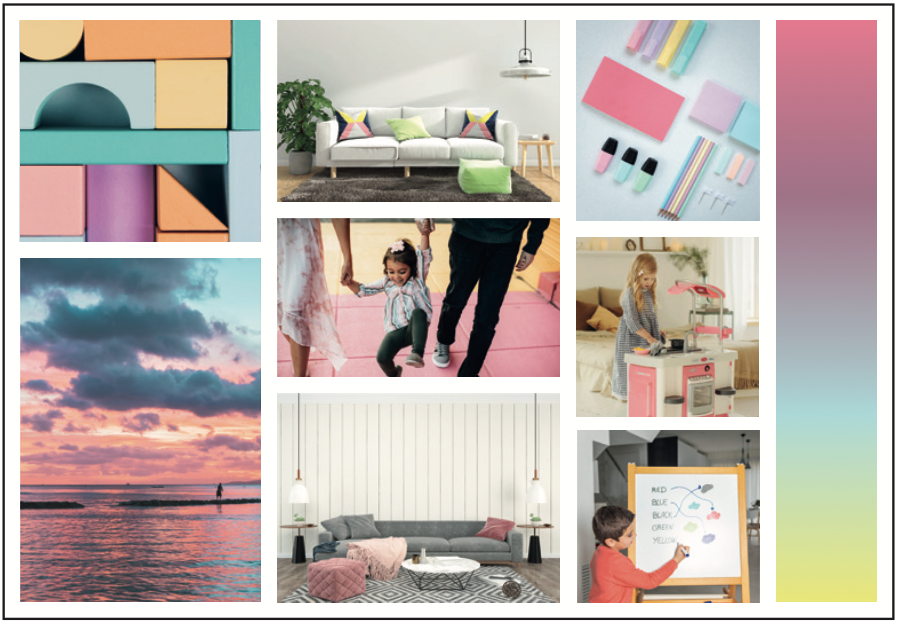
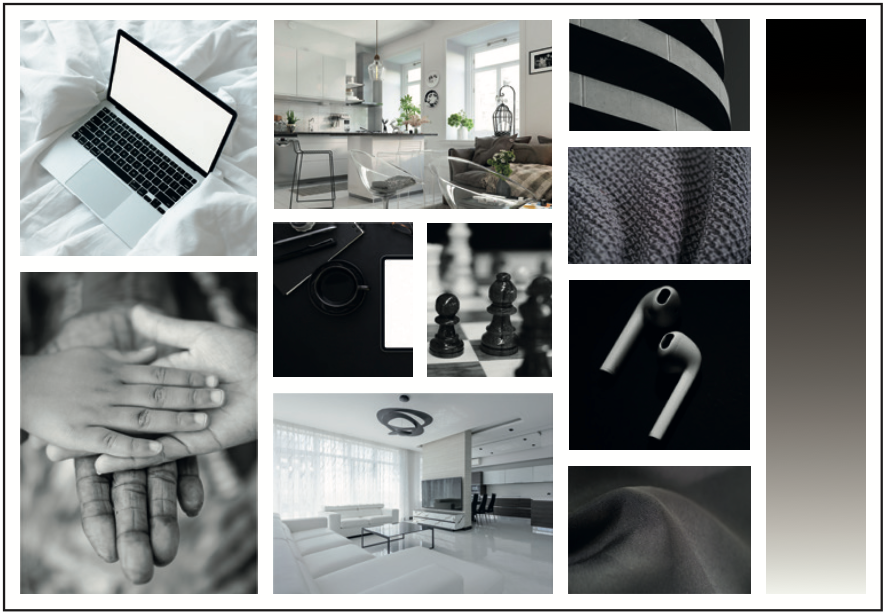

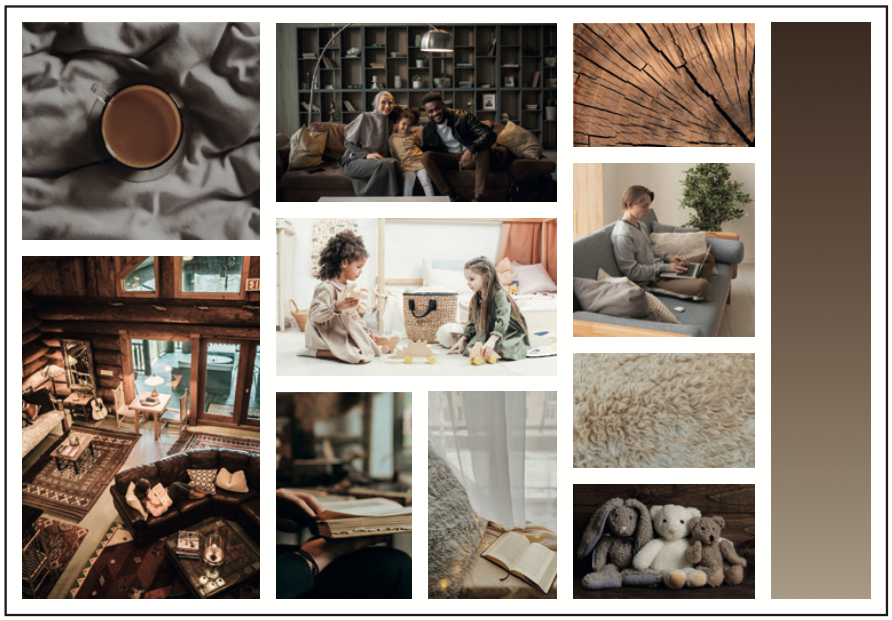
Upon research for colours and materials it was made clear to me that to be the most beneficial to the child they should be bright and bold colour schemes.
Despite being hidden when not in use I did feel the family should have the choice in colour scheme, choosing something that would match in with their living room interior or the most educationally appropriate.


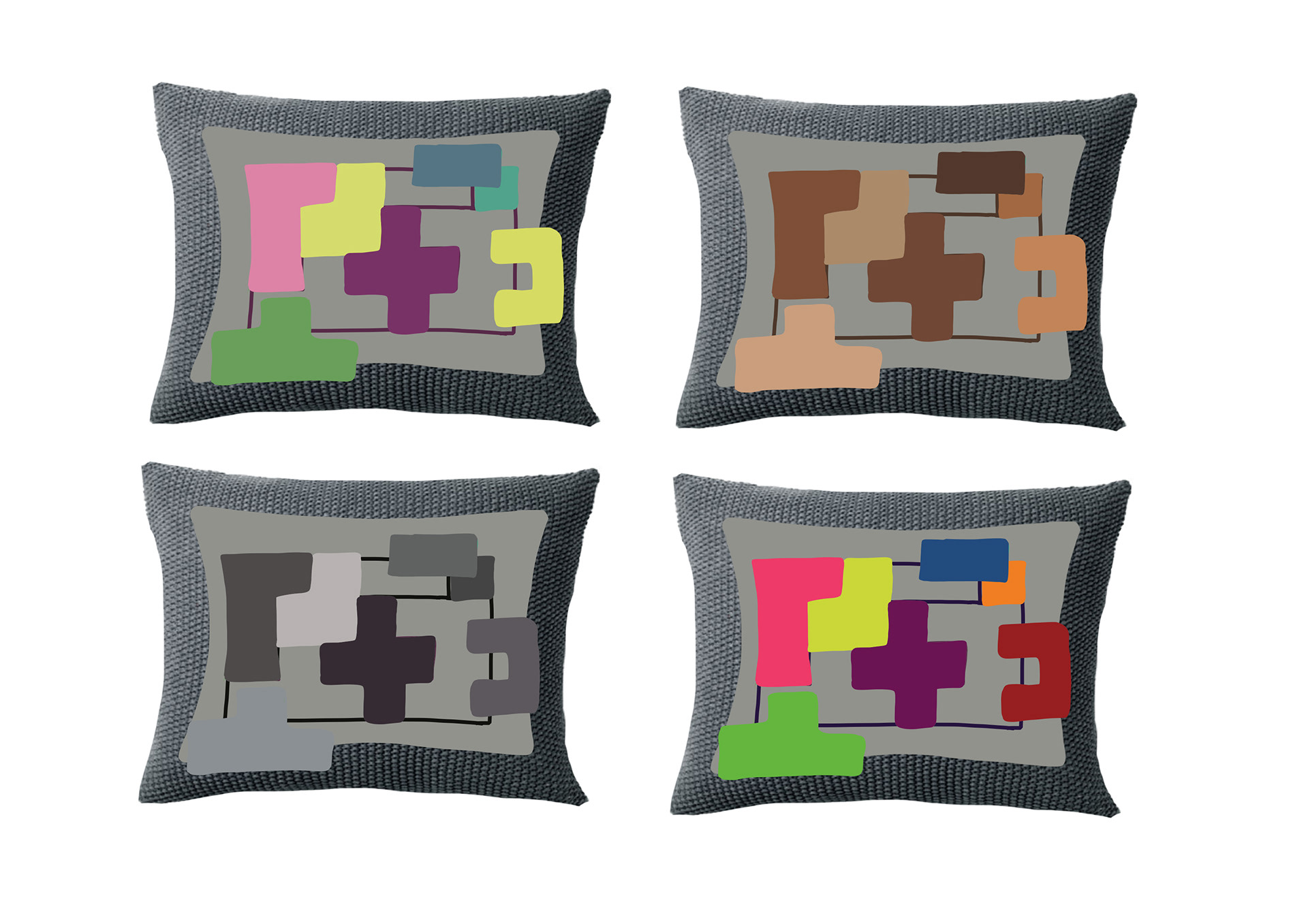

“Try to keep the education bits simple, the easier to read the better. Ideally, if they are similar to school work there is less of a transition between the two classrooms" - Child Practitioner.
With my decided colour schemes I digitally drew some mock ups of my canvases inspired by the previously researched quiet books and discussions with the Child practitioner I had reached out to for external expertise in children's education.
Wanting to demonstrate the value this design brought through improving family interactions and the child’s education I mind mapped out various scenes I could use to tell the story then built a sketched storyline for a film.
I needed to portray the moment in its simple easy form; simply flipping a cushion to take part in a learning experience and the larger more immersive experience of building a classroom fort in the living room











From my review feedback I returned to research for textile inspirations. My interactive canvases were functional but weren’t very aesthetically appealing to adults who would also be using my product and attaching it to their living room furniture.
Initially I had designed my interactive canvases soley to be attached to the back of couch cushions therefore I had made them very bold and child centred with the intention that they would be hidden when not in use. However, following my tutorial I returned to develop the textiles to become more aesthetically pleasing to the adult eye whilst still maintaining their educational functionality. This made me revise the design; in being more suitable to
both target audiences they could be permanently visible without being intrusive. My textile could now be used as scatter cushions. The textiles are also available as large detatchable squares for the back of your existing couch cushion. This will maximise the fort experience as the larger sized textiles could be more useful in construction. They remained an ideal option for parents that did not want the textiles permanently on show.
Returning to my word cloud and understanding what I needed my brand to portray: Family engagement, playfulness, communication, comfort, the home and learning; I chose to brand my project: Educushion.
Understanding that my user/consumer would have to discover this product somewhere I thought about where this might present itself. For Mark I decided it could be something recommended by the foster worker while he is ‘nesting’, preparing his house to be suitable for fostering. I also thought the teacher may recommend it if Sophie falls behind in school knowing it matches the curriculum. In general however I wanted it to be readily accessible, available in generic retail family stores and as a marketing strategy utilized in furniture showrooms such as IKEA and DFS to entertain children while parents shopped and then had the option to purchase.

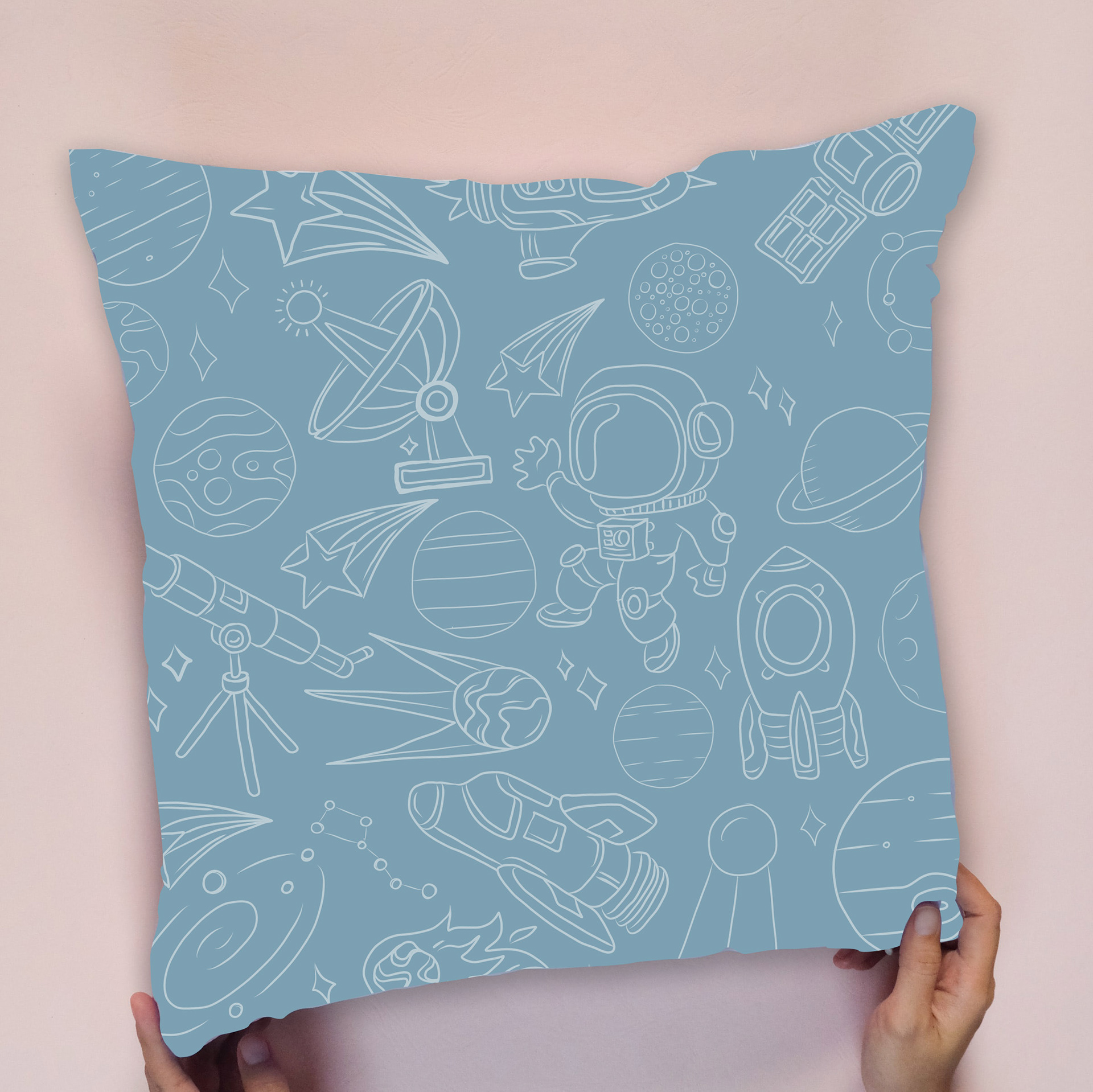
“When she goes to bed we clear all the toys off the living room floor. I’ll make dinner, he tidies the house up and we get a little bit of time, a little bit of space that is just ours. I didn’t even notice we were doing it at first but its became a solid ritual we never settle down for the evening until the toys have been tidied from the living room floor when in reality they are just gonna be pulled out again the next morning”. - Parent
Parents discussing their need to claim back space had been a common theme amongst
my interviews with various familes. Children tend to take ownership of every space in the house. Unable to settle and relax for the night whilst toys scattered the floor had became a key insight of mine. For this very reason I needed my design to be something that took minimal time to tidy and perhaps encouraged the child to clean up themselves.
my interviews with various familes. Children tend to take ownership of every space in the house. Unable to settle and relax for the night whilst toys scattered the floor had became a key insight of mine. For this very reason I needed my design to be something that took minimal time to tidy and perhaps encouraged the child to clean up themselves.
A fort created by educational canvases on the back of couch cushions that to tidy needed simply to be lifted off the floor, rotated and placed back onto the couch to be hidden once again seemed a very minor inconvenience; one my users appeared happy to do when asked about the cleaning up aspect to my project. By deciding the couch to be my focussed soft furnishing area for these moments to either begin or be experienced in, would encourage family interaction in this space. Promoting non-digital communication through these conversational textiles could bring families closer together and give familiarity with this area being shared rather than predominantly adult owned which it is frequently perceived as. In my extreme users case Sophie would become familiar to the living room environment and potentially spend more time there now feeling more comfortable in her surroundings
Controlled by the parent and child, Educushion could simply be a comfortable learning experience conducted on the couch or a full immersive temporary learning environment built using the Educushion textiles. Other than my textiles I hadn't provided many tools to create this Educushion fort I had envisioned. I explored many soft furninshings around the home to aid this construction; curtains, towels, duvet, table covers etc. My design criteria had required that my product(s) were to be easily accessible in order to be readily utilised. For this reason I decided my "fort tools" should be living room items kept in close proximity. I wanted the child to be using these items regularly, it needed to be something familiar to them and give them a sense of comfort. I chose to integrate a blanket into my "fort kit". Educushion textiles would be sold individually however, there is an option to purchase a Deluxe Fort Kit. This consists of a set of Educushion textiles, in either Scatter cushion covers or large textile squares, wooden pegs to help with fort stability and a large blanket printed with the blueprints of a variety of forts on it.
Using transfer paper I was able to print and iron on my texiles to fabric. I used a sewing machine and cotton wool to create a scale representation of my educushions on a modelled couch. I used this model to experiment with my fort kit exploring different ways it could be assembled. I created a short stop frame animation showcasing one of the construction options.
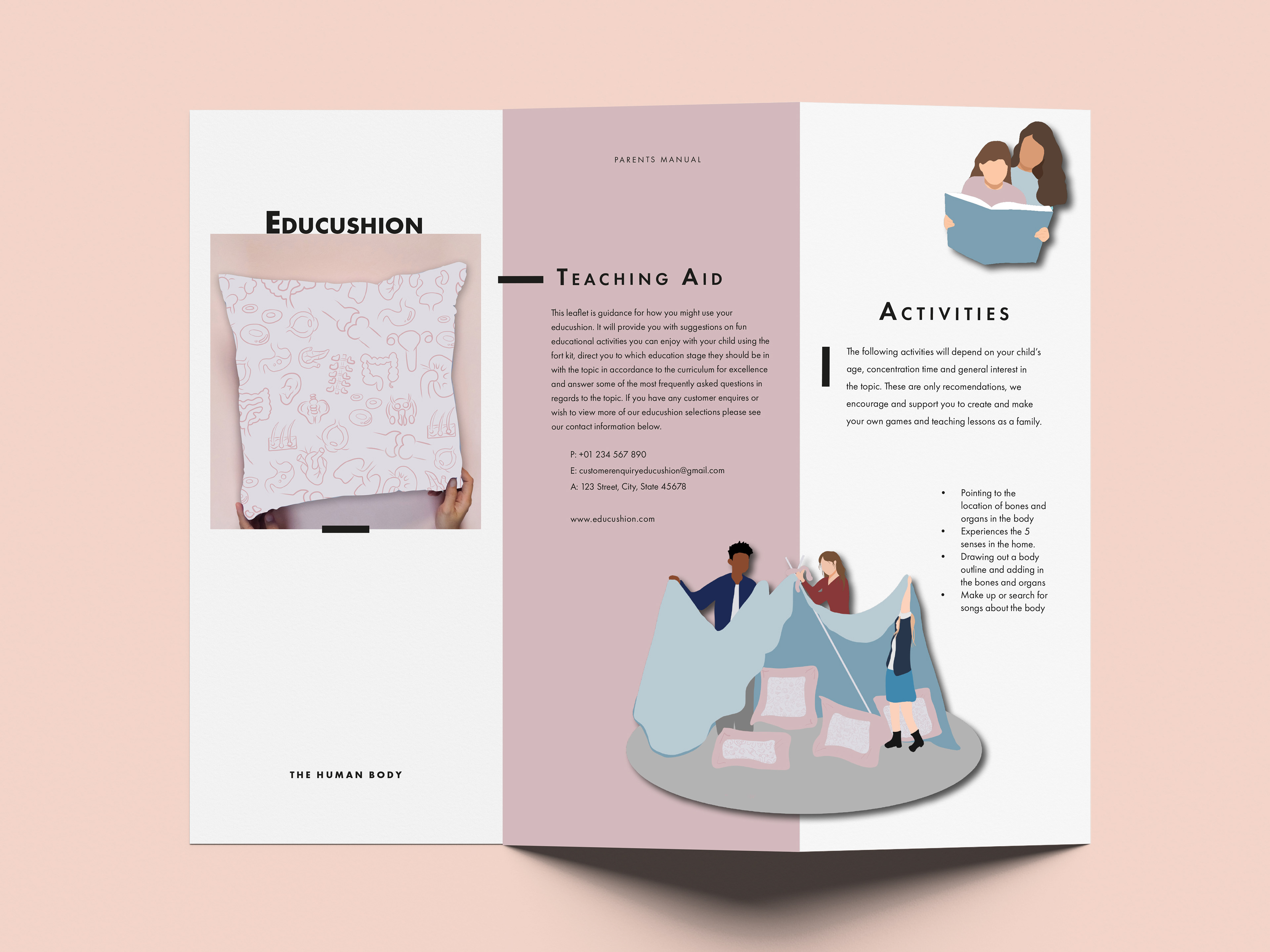

“We still have a lot of parents reluctant to use IT and many parents still worrying about being able to teach the content of what the child has to learn. Even though its primary level we still have a lot of par- ents worried they’re not able to explain it properly or going to teach them wrong.” - Primary 1 Teacher
My design wouldn't have as much impact if parent's did not know how or what to teach their children. I needed to make something to provide a lesson plan and guidance for the parent to refer to. I originally started to design a book but then I roleplayed as a parent; just finished work, helping their child with homework and having to pick up a book to read. I decided that it would be too overwhelming. Instead I created a three fold brochure teaching aid that would be supplied with each textile.
“We’ve got a lot of families that are struggling and spending a lot of time
in the house when parents either aren’t motivated or don’t feel confident to do other things with them. The kids are just rattling about the house all the time, struggling with their school work be- cause their parents don’t feel equipped enough to help.” - Primary 1 Teacher
in the house when parents either aren’t motivated or don’t feel confident to do other things with them. The kids are just rattling about the house all the time, struggling with their school work be- cause their parents don’t feel equipped enough to help.” - Primary 1 Teacher
The front of the manual declares which textile it is instructing you on, contact details for the company and provides a list of possible activities involving the Educushion. The flip side of the brochure features a labelled diagram of the Educushion textile, a brief summary of the subject and commonly asked questions and their answers. Also documented is a concise list showing the stages in accordance with the curriculum for excellence for reference.

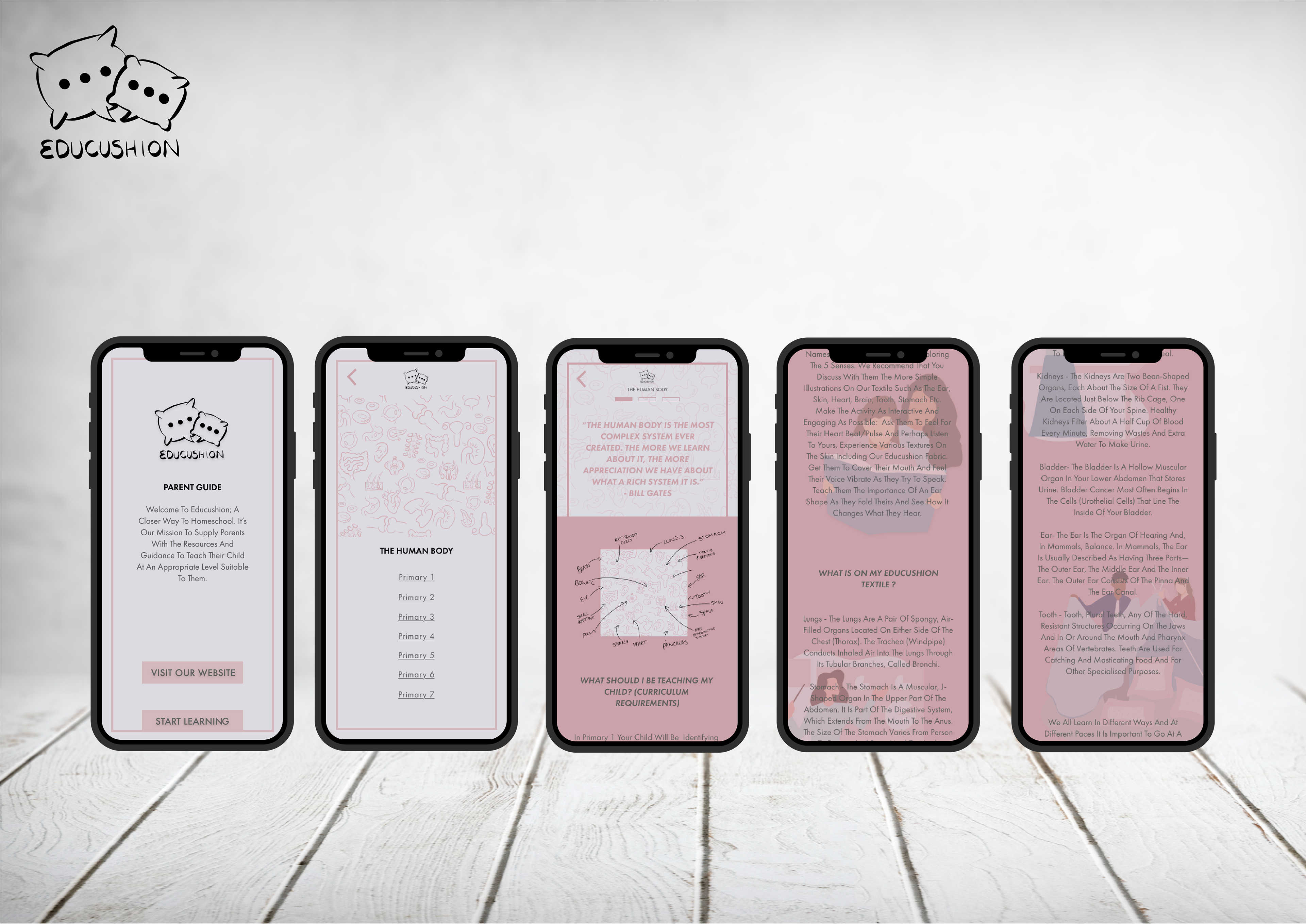
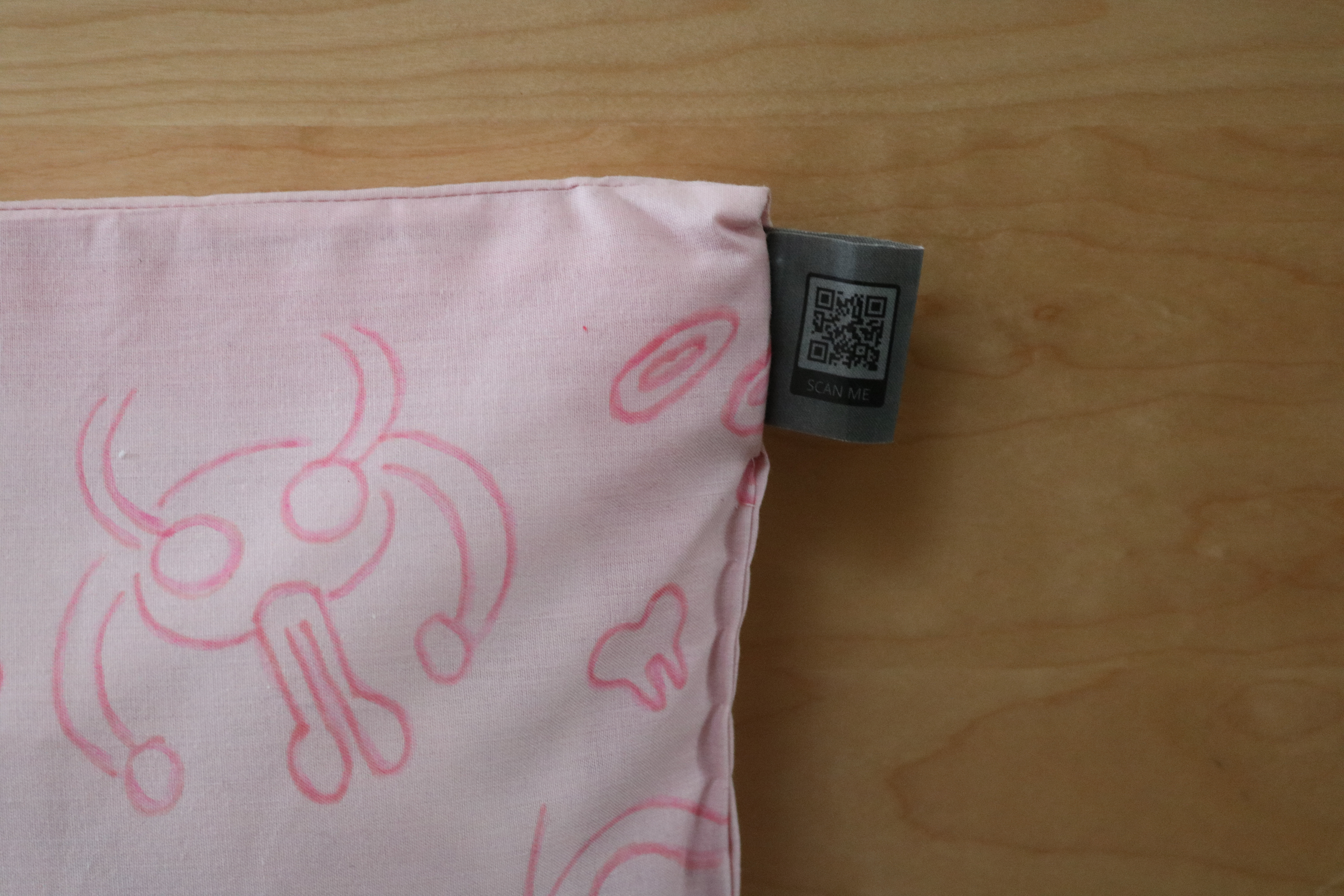
Supplied on the Educushion label and complimentary parents guide is a QR code. Once scanned it gives you access to education material in relation to that Educushion via an app. This resource, providing lesson guidance and activity suggestions appropriate to specific curriculum levels, is encouraged to be referred to before the family engaged activity. Parents can prepare for their child's questions and create a non-digital teaching experience; hence the paper parents guide to give small prompts where nesessary.
https://aborris1.wixsite.com/educushion
Linked in the app and Parents Guide is the Educushion webpage. Although I intend my design to be available in many retail stores and displayed in furniture show rooms; I did feel that the company needed it's own webpage. This would allow parents to browse the other available textiles and purchase more. The cushions are categorised under the eight areas of the curriculum for excellence: health and wellbeing, mathematics, technologies, expressive arts, languages, sciences, social studies and religious and moral education. This will make it easier for parents to navigate the website when looking for the school topic their child needs support with.



